Dear friends,
We spent a couple more days in and around Nizwa and Al Hamra in the interior of the country and visited the magnificent 17th Century Jabreen Fort, palm plantations and Wadi Nakhr, the hanging villages of Al Aqor and Al Ain on the Sayq plateau, walked along the ancient irrigation (falaj) channels and viewed the countryside from several impressive vantage points.
A typical view around Nizwa with a huge fort in the distance, rugged mountains and an irrigated area around a town.
Arriving at Jabreen Fort we were warmly greeted by this smiling gentleman.
Looking from the inside, this magnificent door which pivots on wooden beams set in the earth
and in the massive beam above, would surely keep anyone out.
Inside the fort, looking up from one of the balconies around the second level.
The view from the roof of the fort looking across irrigated orchards to the distant mountain range.
Astonishly, there was a small room on the second floor of the fort which was a stable for the sheikh’s horse.
A plaque on the wall showed the trappings an Omani horse would have had.
One of the relaxing side rooms in the fort. This fort was also once the seat of Omani learning.
A carved Koran stand with several copies of the religious text in one of the alcoves of the room.
Looking out through a window to one of the corner towers, a narrow gun slot either side.
Looking up, the ceilings are always beautifully decorated and often the design is an echo of the carpet below.
Wherever you look, the detail in the design is beautiful and very often accentuated by the sunlight and shadow.
Looking down into the interior courtyard dotted with tourists and guides.
Another lovely detail of a window alcove and a light at the corner of a stairway in the Jabreen Fort.
Back on the road again, we passed a beautiful new mosque, and then headed towards the Wadi Nakhr, passing villages which merged almost perfectly into the landscape, and then being surprised with a perfect picnic lunch.
An impressive new mosque in the desert.
Blink and you might miss it – a mud-brick village at the foot of the mountains.
The gentle entry into Wadi Nakhr, sometimes called the Grand Canyon of Oman.
The impressive rock walls of the wadi, one tree finding a toehold in the rocky floor.
Our guide Annie had told us the evening before that we were in for a lovely surprise the following day and, hungry after our morning’s visits, we came upon this treat – a magnificent picnic set up in a date palm plantation.
Lunch awaits – it’s a rough life !
Although the date season is already over, we watched a demonstration of how the dates would be harvested.
The fronds cut from previous years make excellent footholds on the tall truck for a climber.
Exploring another ruined old town, with gates and doors still intact and some buildings still occupied.
Mohammed explaining the importance and meaning of the decorated doors.
Doors and windows looking out to ruined walls of neighbouring houses.
Round each corner of the town, we found new sights beckoning.
The town also houses a cultural centre which is well maintained and also functions as a tourist attraction.
In the kitchen, shafts of light from the ceiling make the scene come alive.
A demonstration of how bread is made. The women of Oman do not like to be photographed,
so they remain veiled against inquisitive foreigners, as they go about their tasks.
After the coffee beans are roasted over the fire in the skillet to the woman’s left, they are pounded into a powder.
Another demonstration – pounding chickpeas for hummus.
While we were there, we met a delegation of senior Omani officials who were also visiting.
During a very informal chat with the officials, I took the opportunity to ask why, as an NZer,
I did not need a visa to visit Oman, one of only two countries having this status.
He replied, “When I went to NZ I did not need a visa, and so we have to return this favour“.
I don’t know why we thought this was so funny but it appears we did.
However, the watching cat was clearly not so amused, just watchful.
Before being offered the customary coffee and dates, we had the chance to wear traditional Omani outfits.
I chose a beautiful midnight blue velvet dress with a glorious yellow scarf.
With fellow travellers, Mary and Alec also colourfully garbed.
One of our drivers congratulated me on becoming his ‘fourth wife’.
The yellow strip across my forehead is a sandalwood paste to keep me cool – maybe needed!
The relaxing vistor’s room where we ate fresh dates and drank coffee with cardamon.
The men at one end of the room, the women at the other, coffee cups waiting to be filled.
On another excursion, we hiked on the Sayq plateau where villages perch as though suspended over terraced hillsides and deep gorges. The area is famous for roses bushes and orchards of pomegranates, apricots, walnuts and peaches. Sadly, the harvests were over so we were not able to experience the scent of the roses or the sight of the full harvest.
Magnificent and dramatic terracing on the steep hillsides.
The point from which we hiked to these two villages.
A vantage point from which the orchards below the village can be seen.
A shady walk along the ancient falaj (irrigation) channels of the orchards.
Another view of the solid old retaining walls and falaj system.
A budding local photographer and his little sister in a town below the hanging villages.
Our local guide Mohammed, explaining the falaj system and how all the towns benefit from captured spring water.
The beautiful greens of a date palm plantation we walked through.
Looking back from a vantage point to one of the villages we visited during our travels.
Looking in the other direction showing the benefits of irrigation on the otherwise barren countryside.
Lovely shadows show the creased mountain over a village on its flank with a date palm plantation in the foreground.
Evening shadows on the road back to our hotel.
The next journal entry will show you a little of the spectacular mountain road we traveled from Nizwa back to Muscat and the beautiful village of Bilad Sayt where we walked among the houses and irrigated fields under towering mountains.
Until then, best to you all,
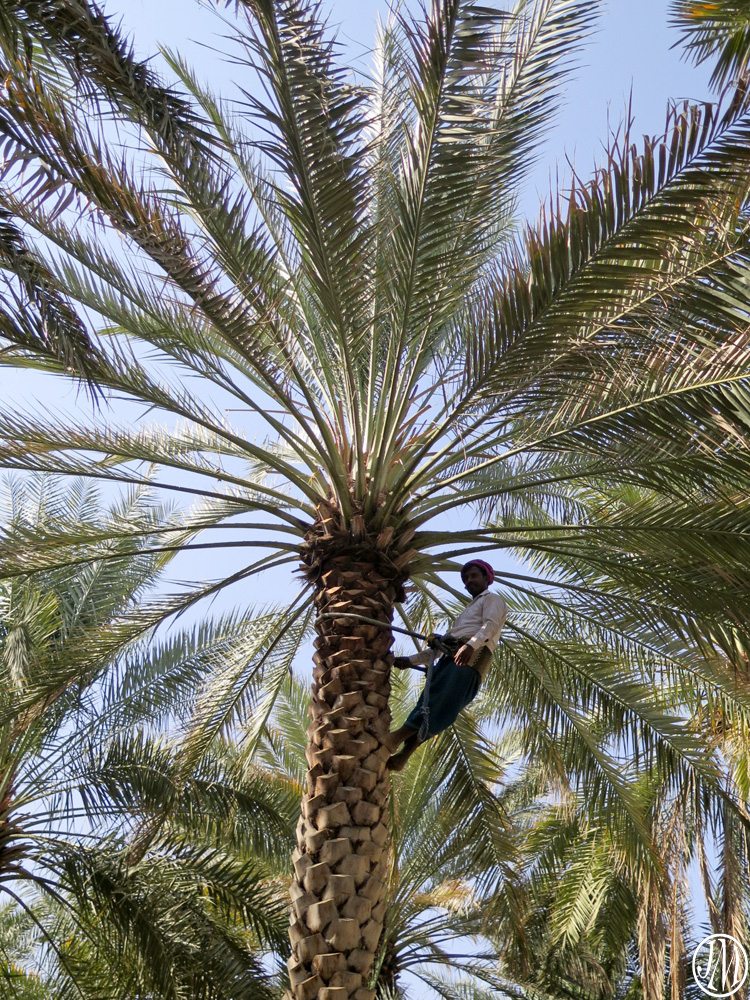
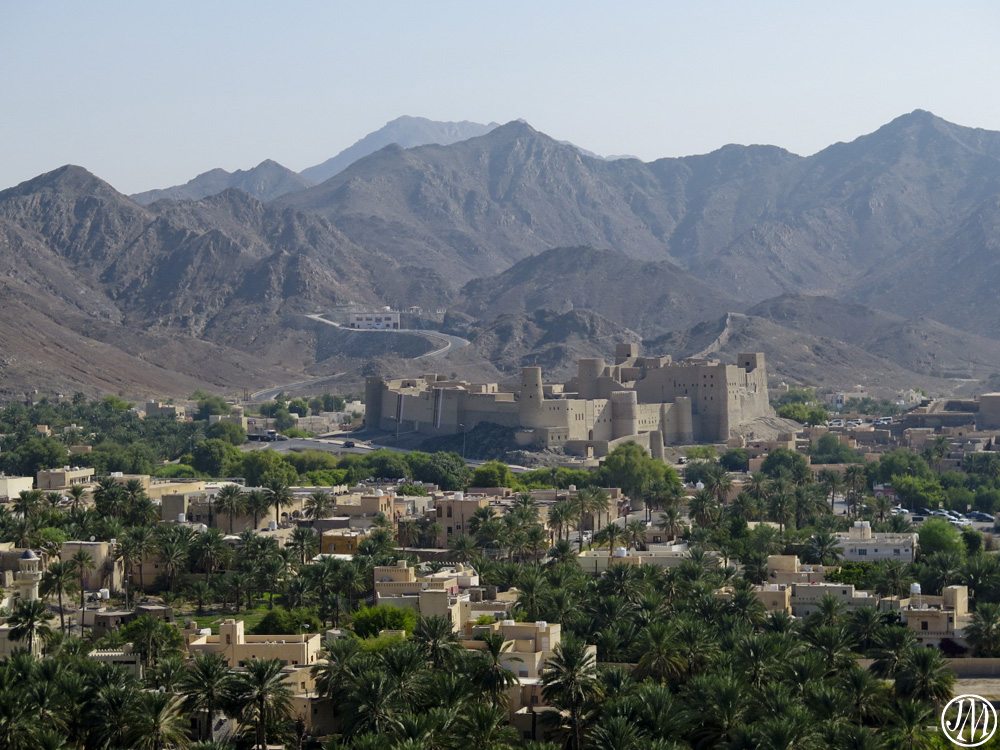
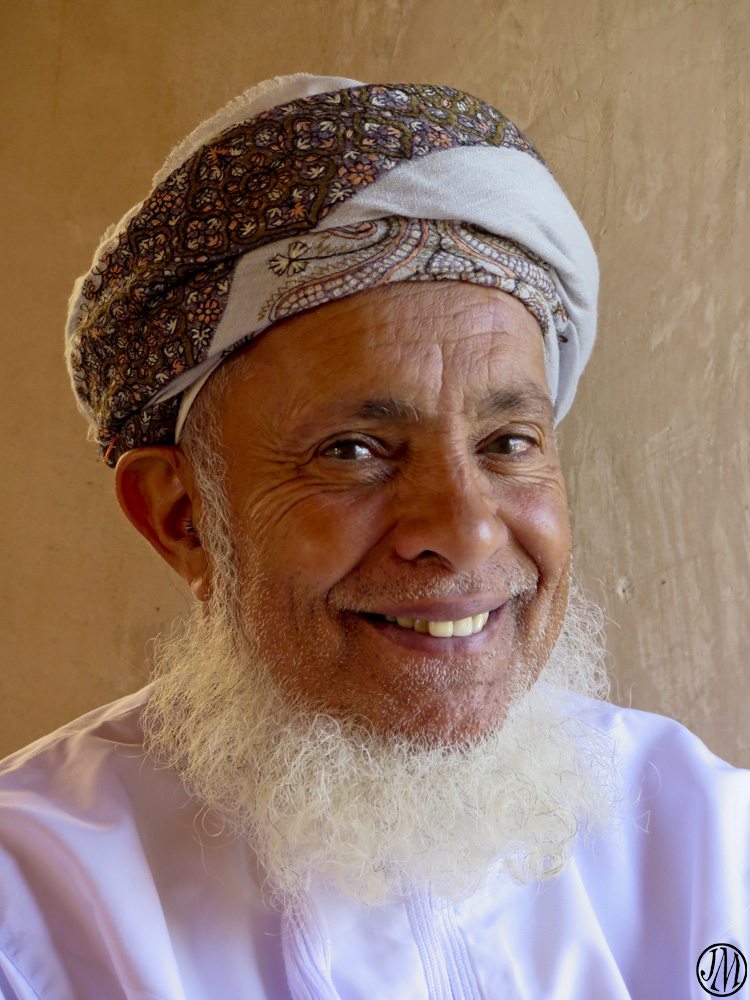
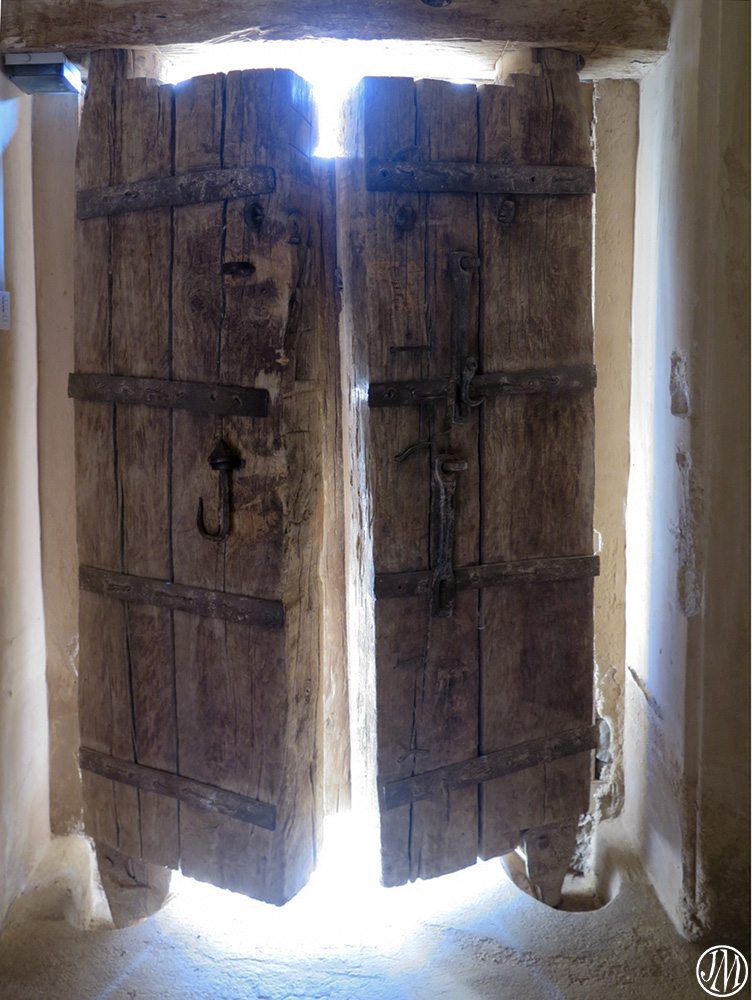
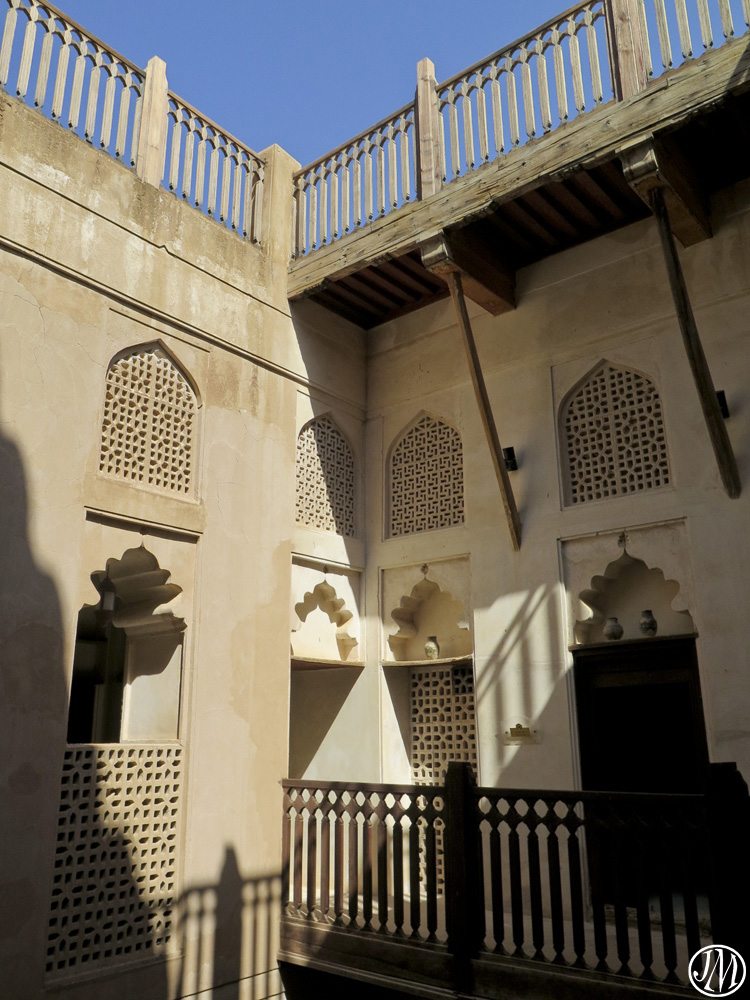
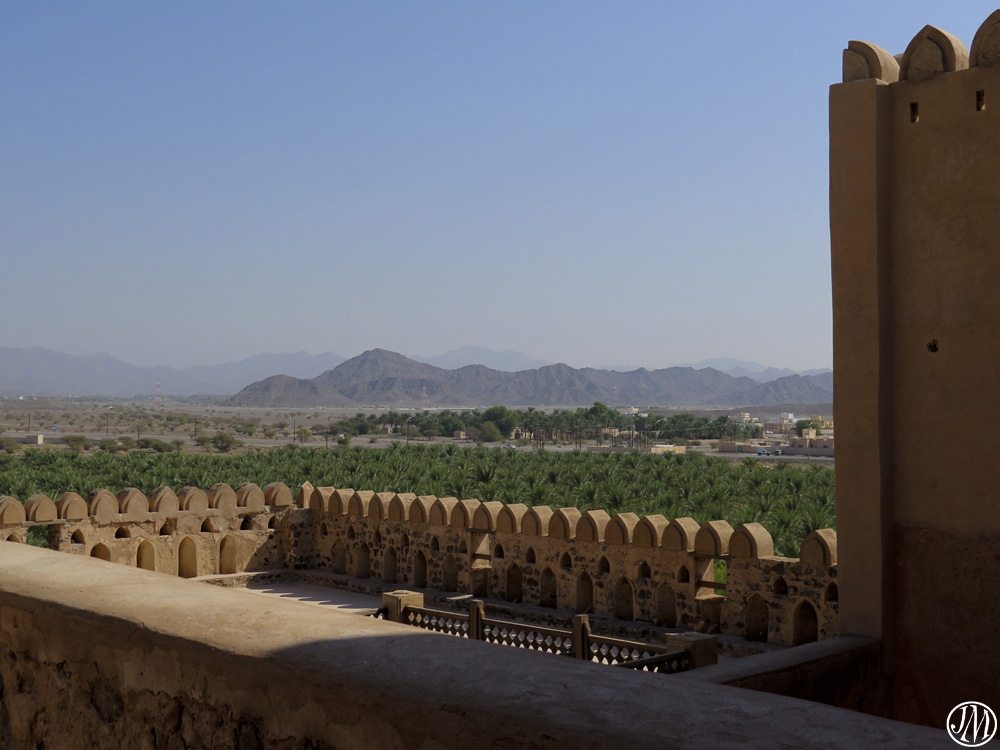
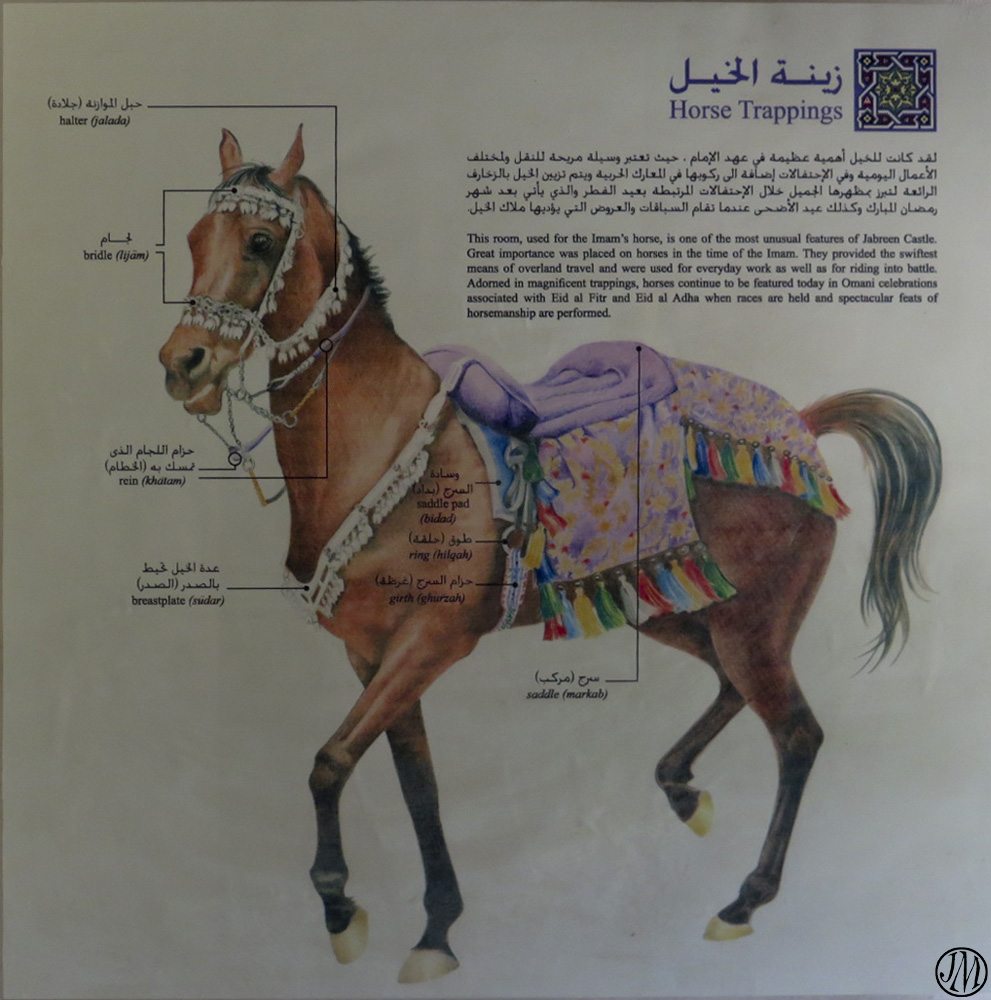
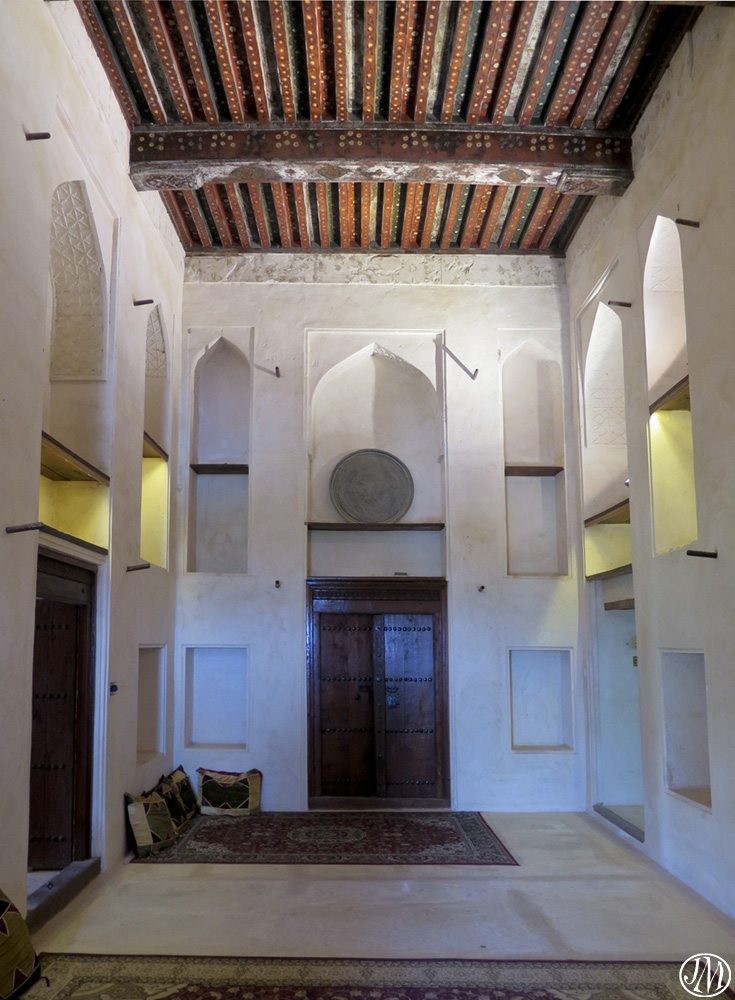
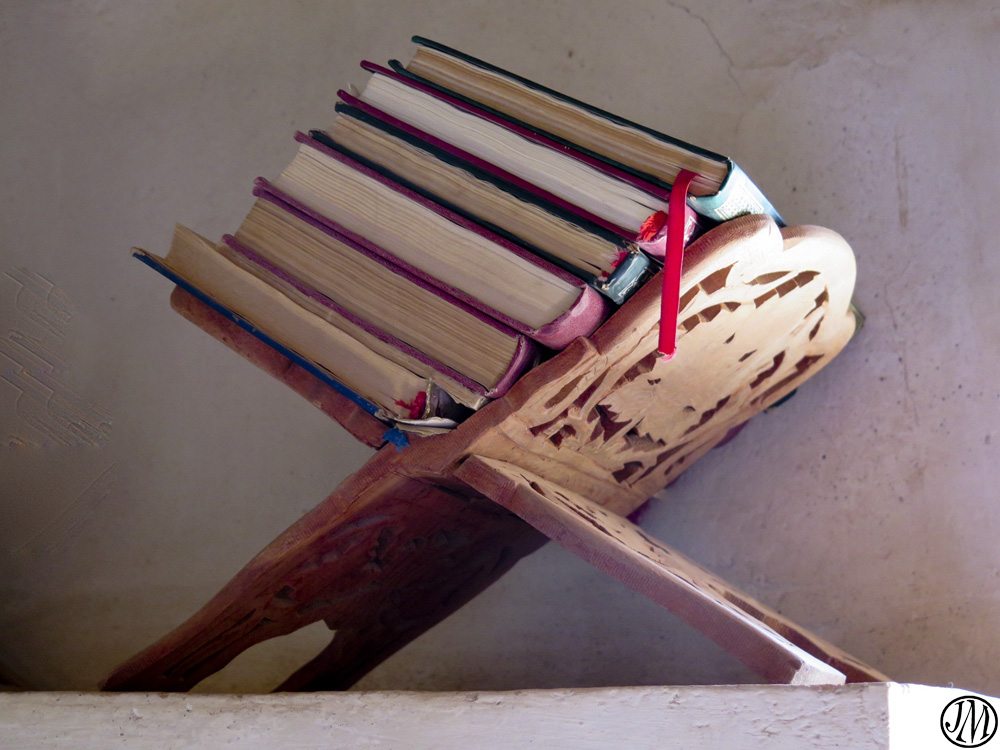
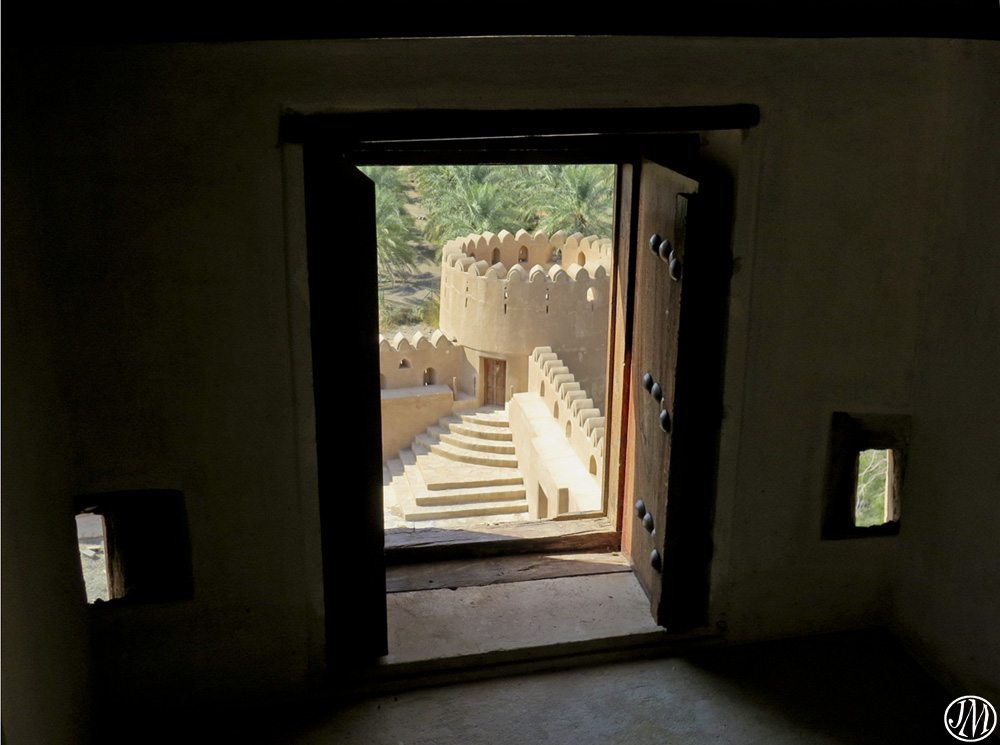
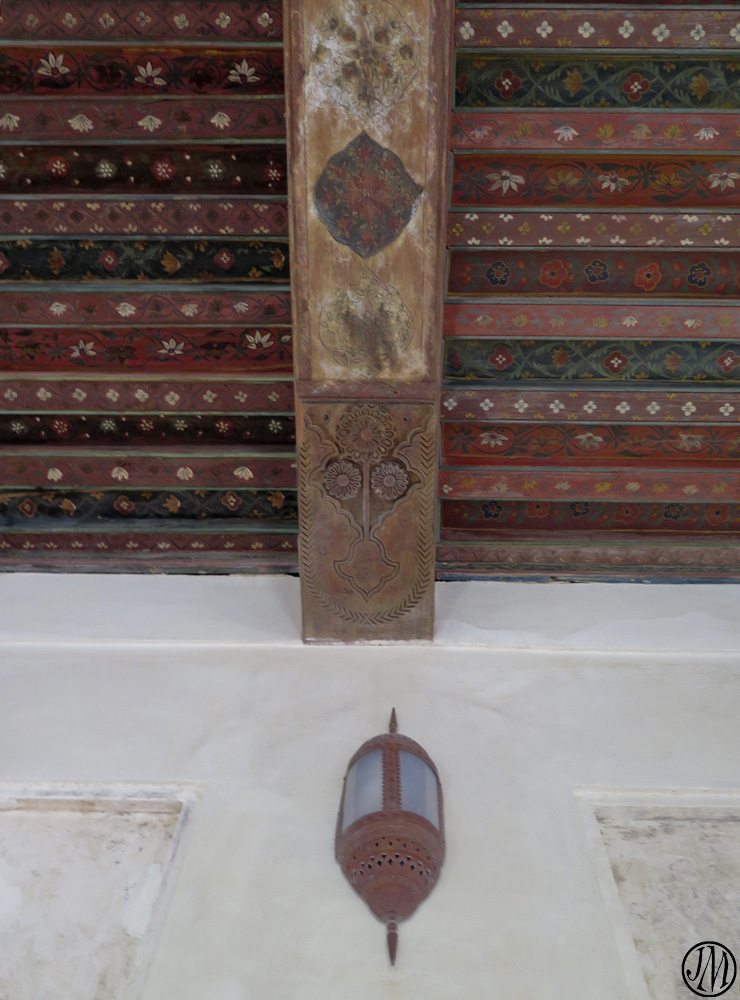
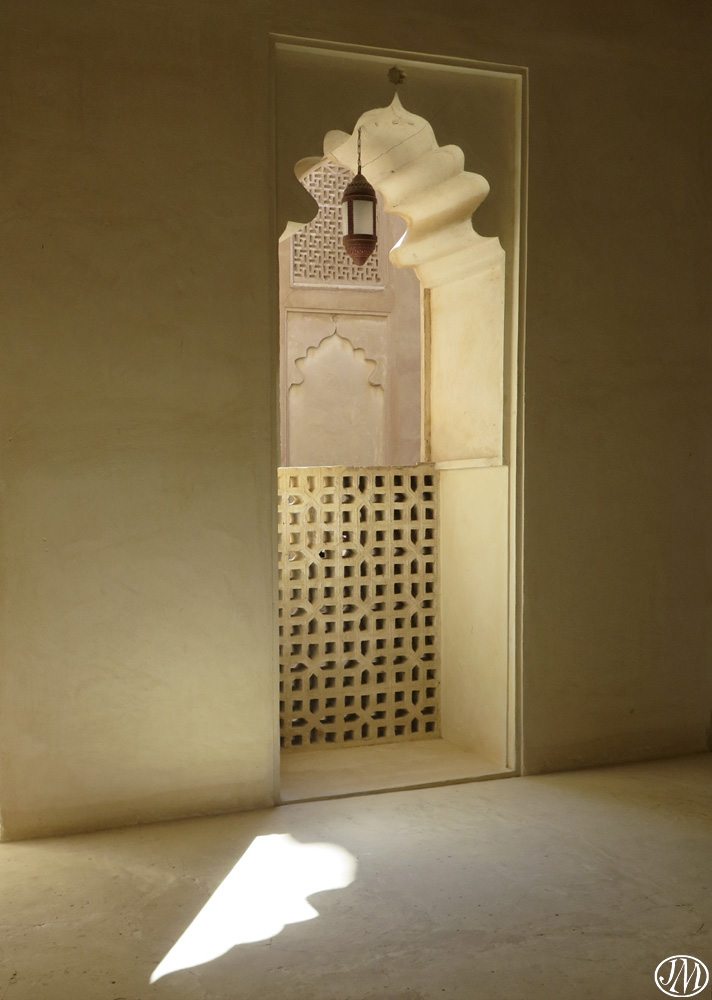
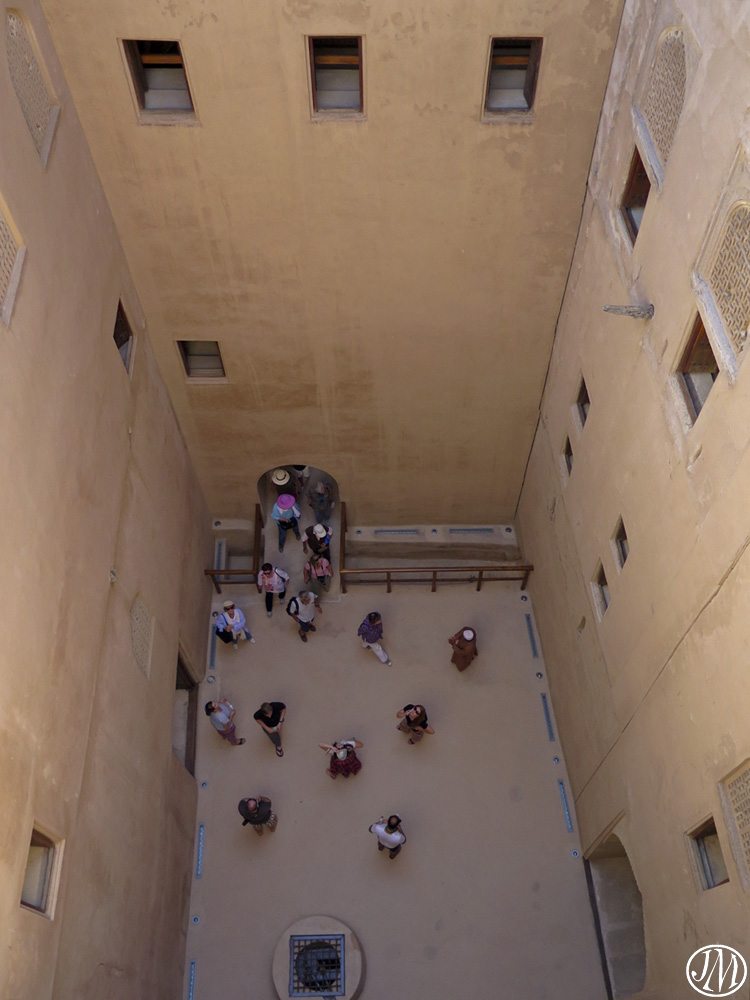
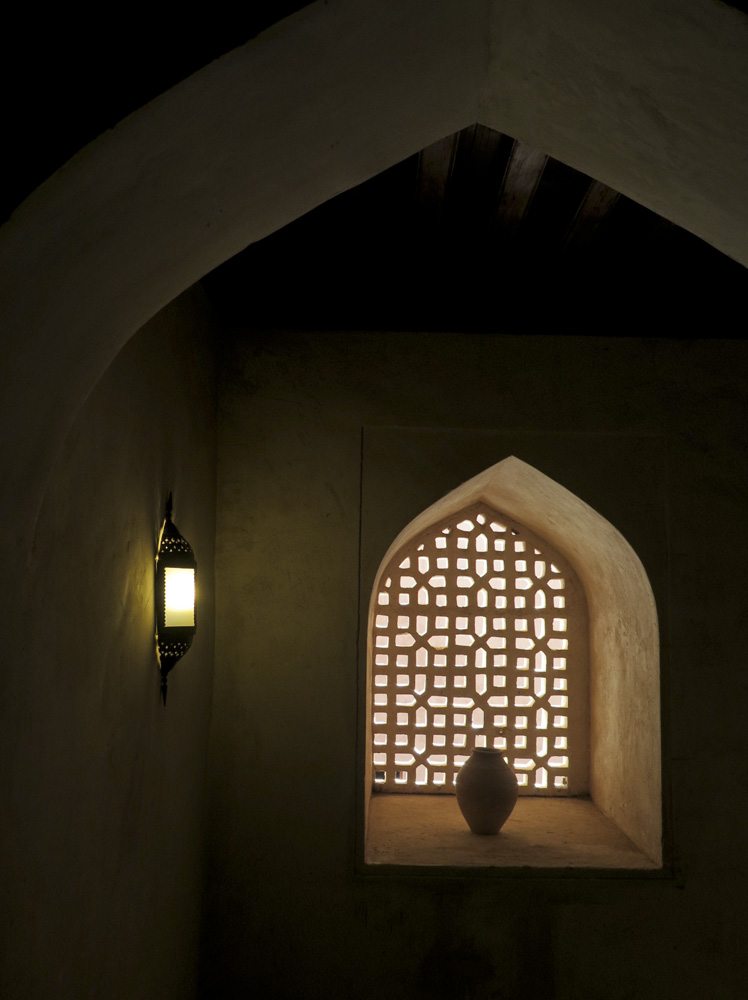
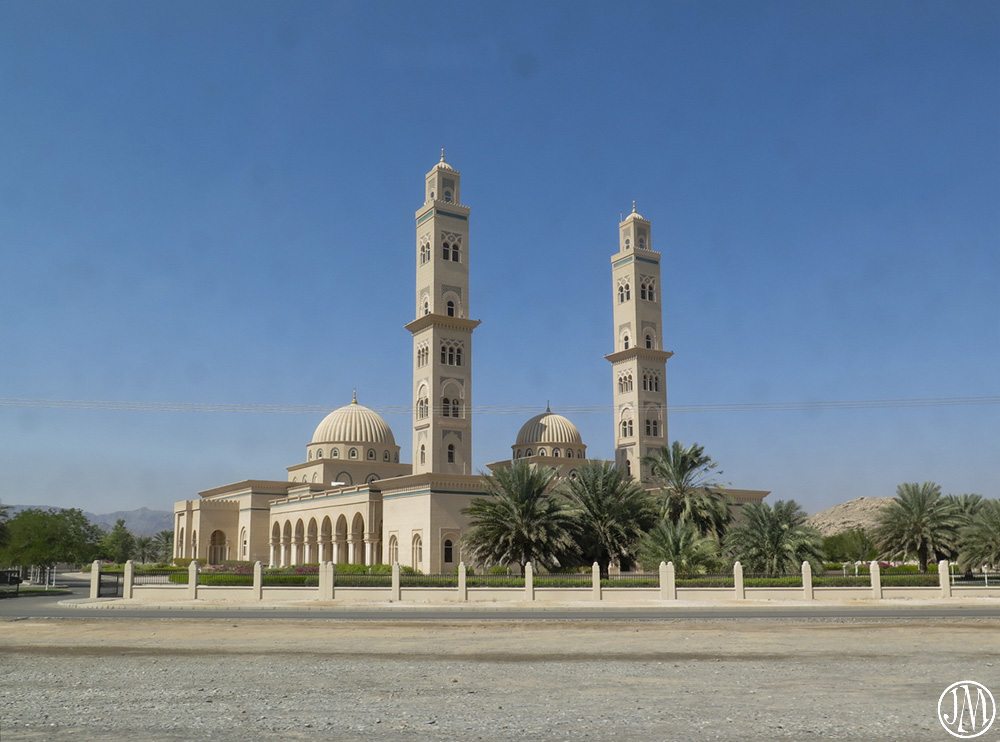
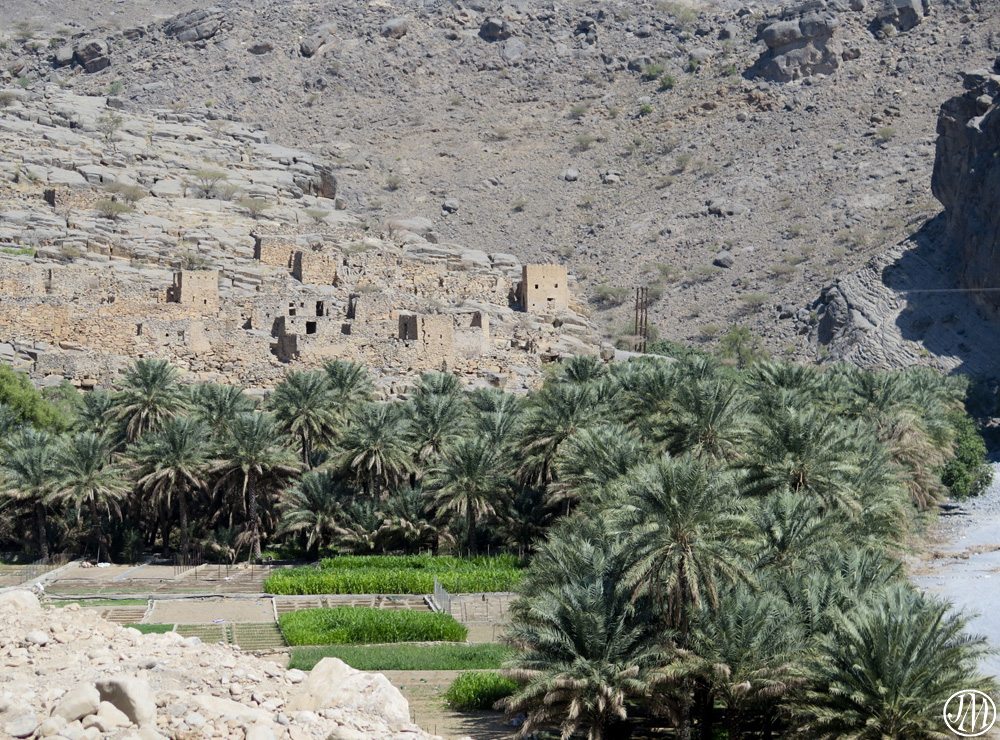
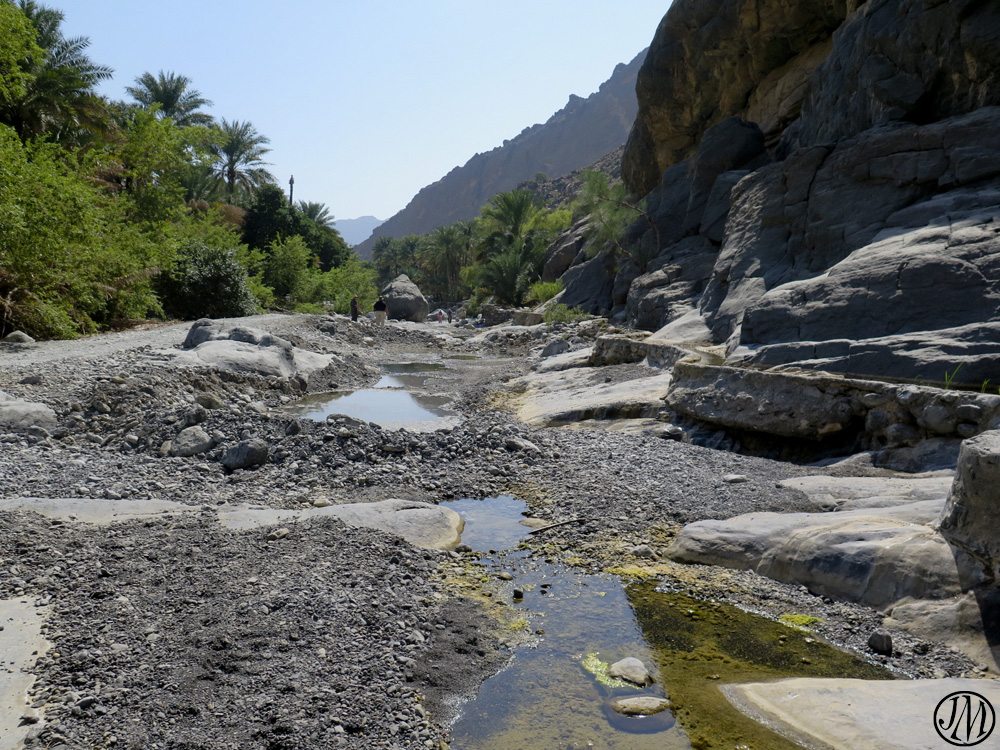
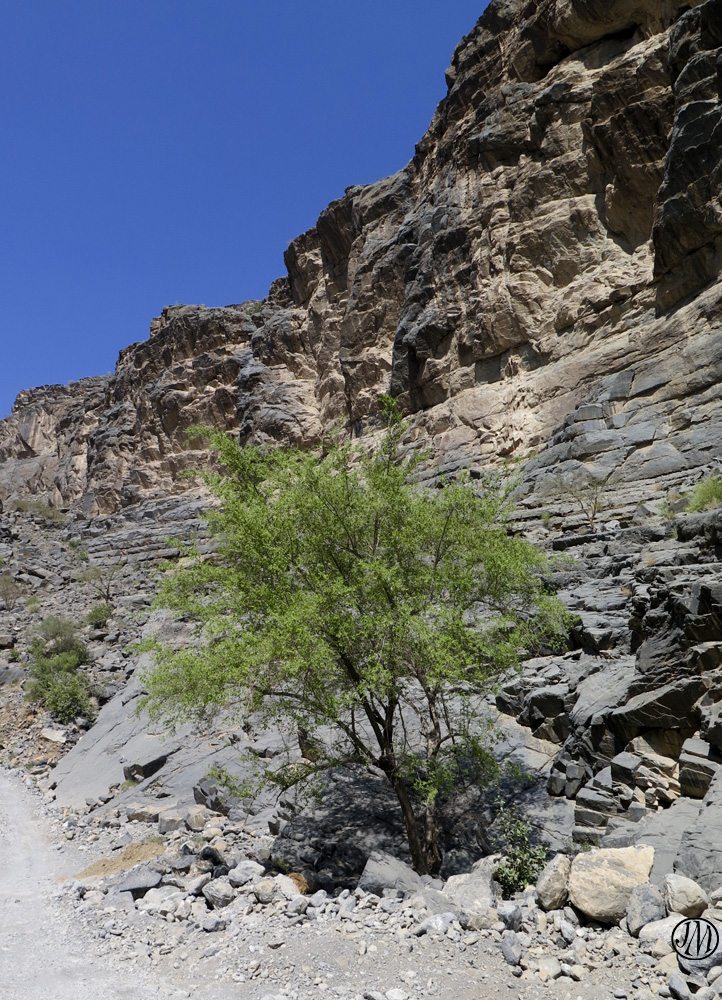
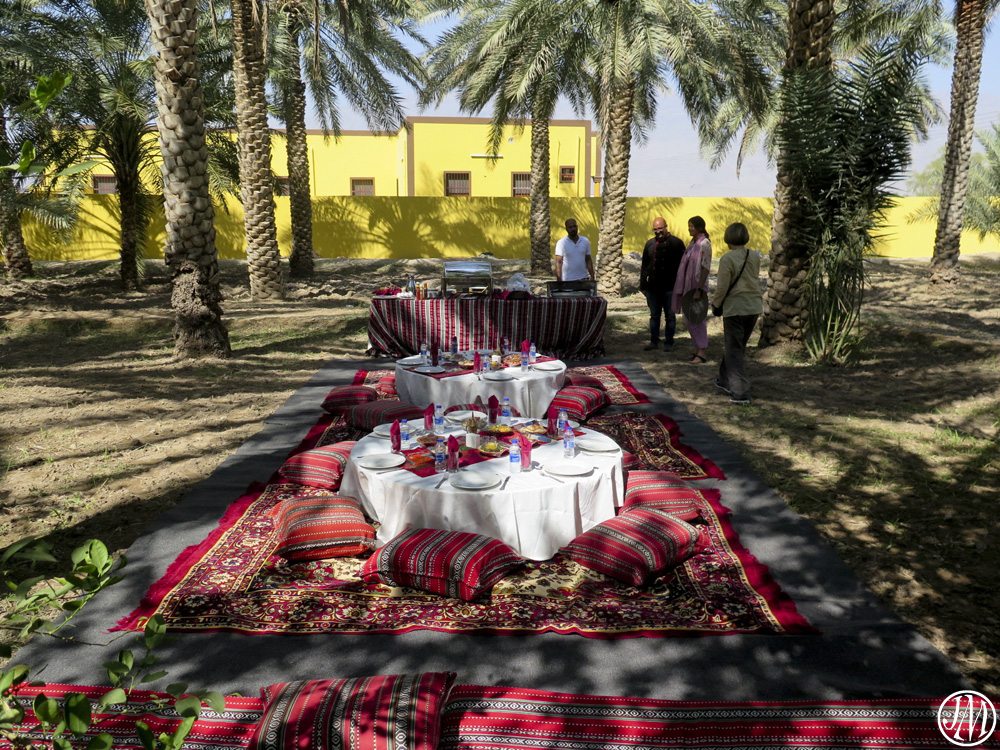
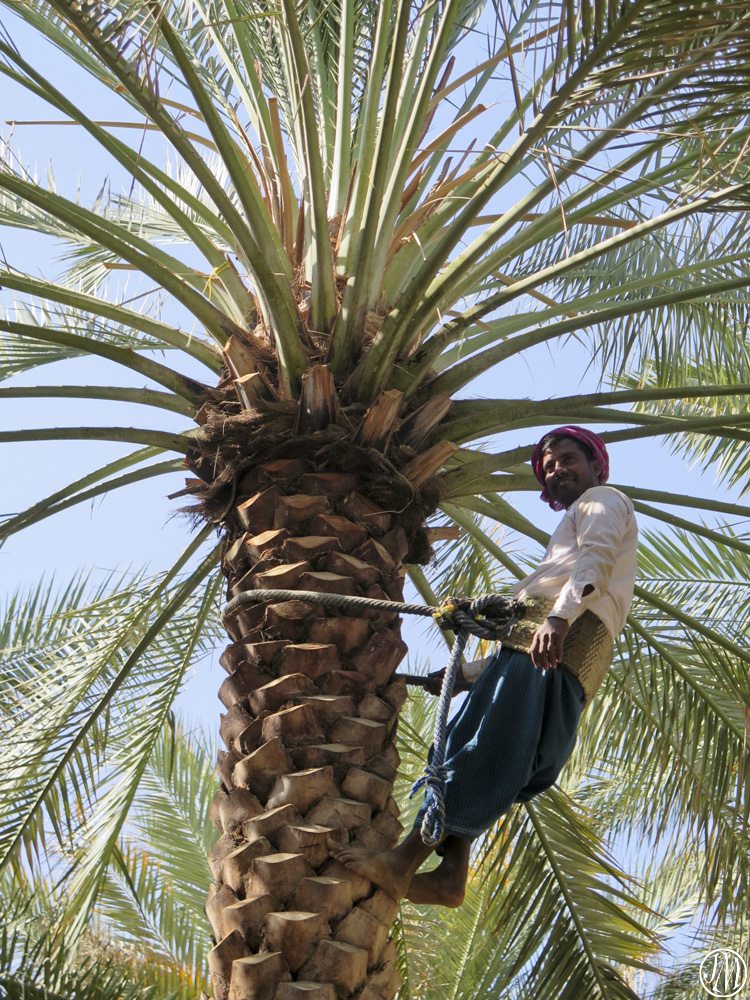
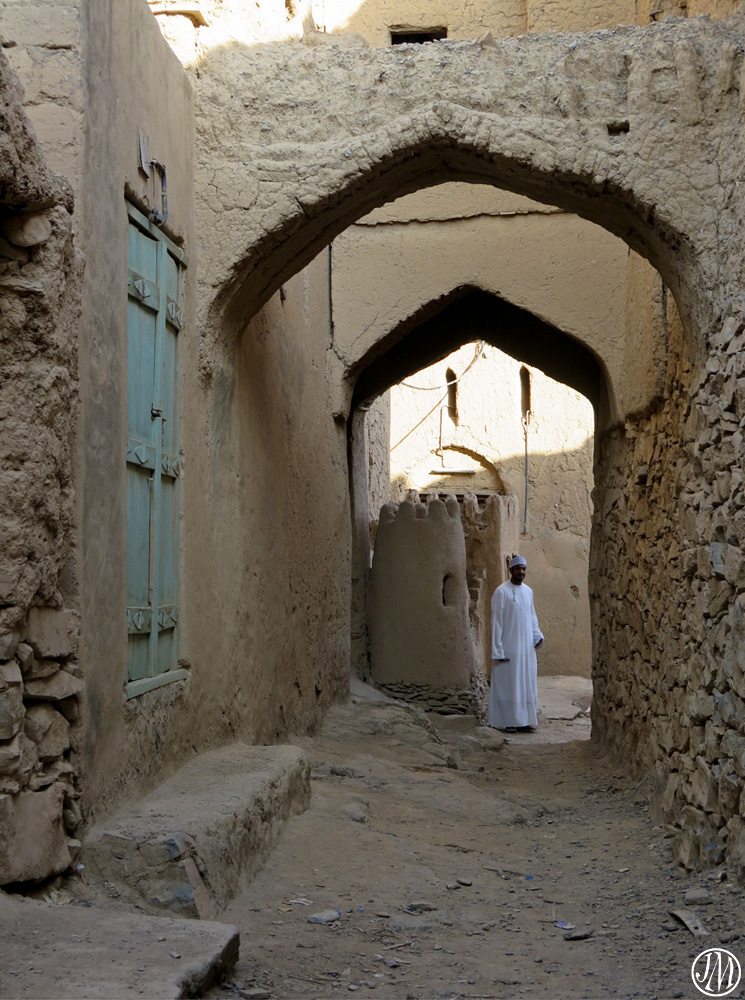
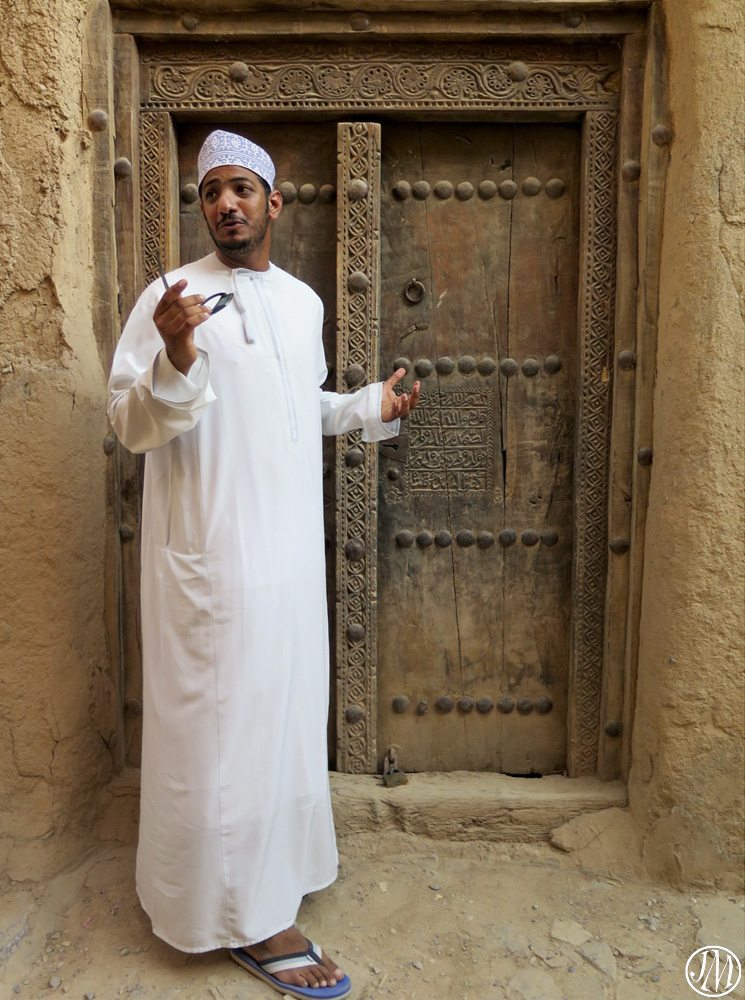
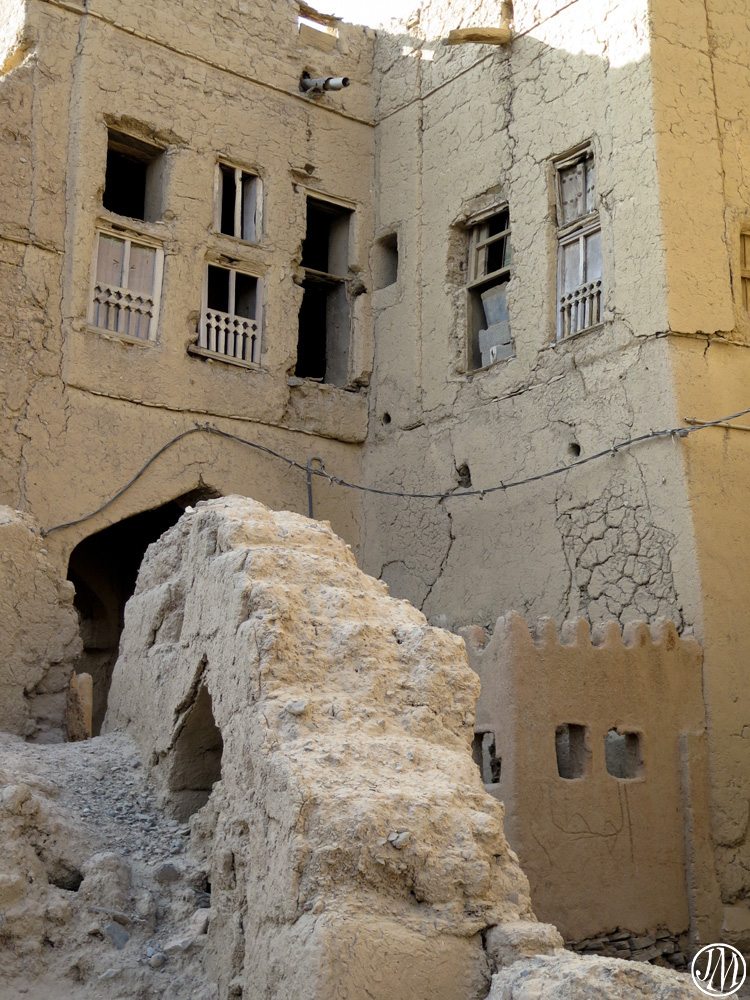
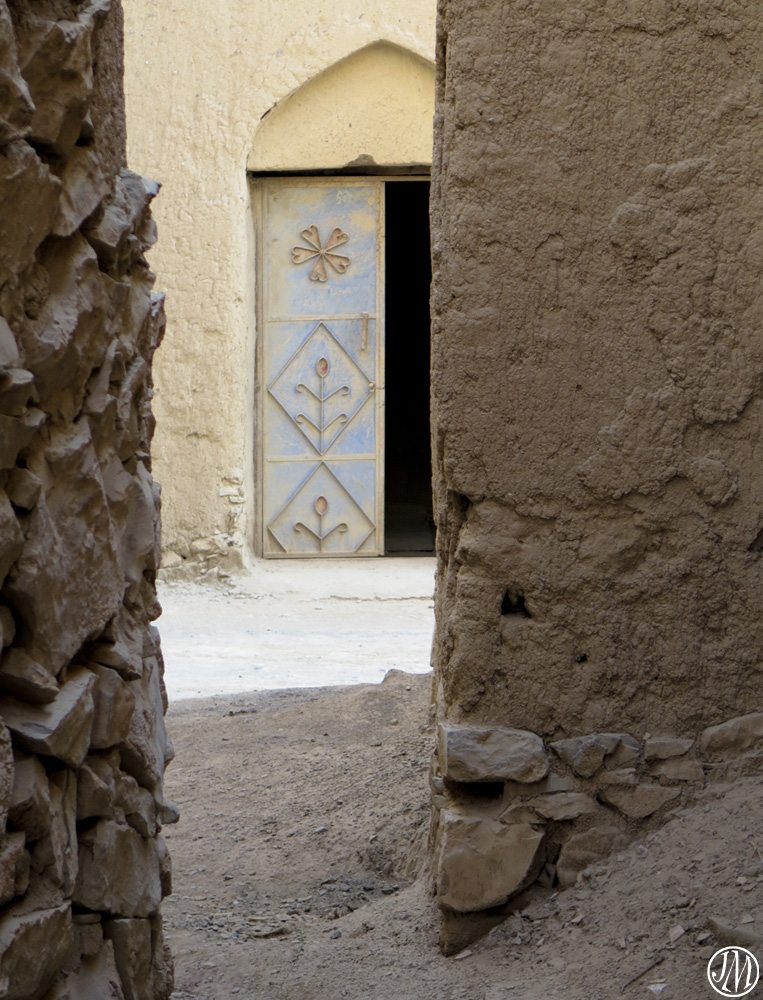
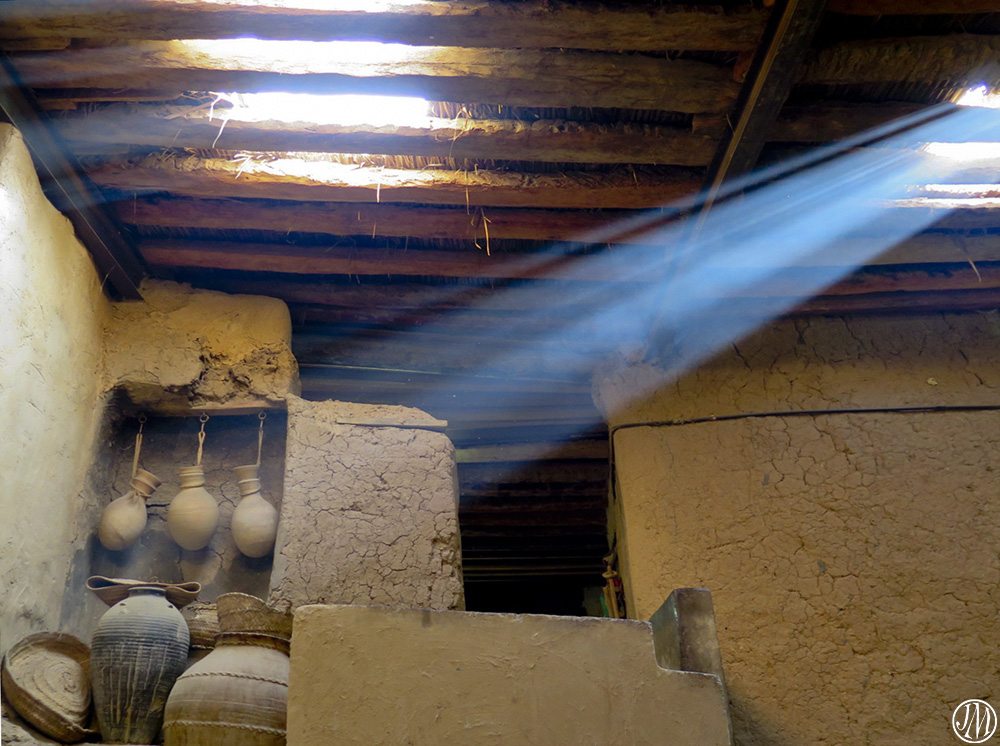
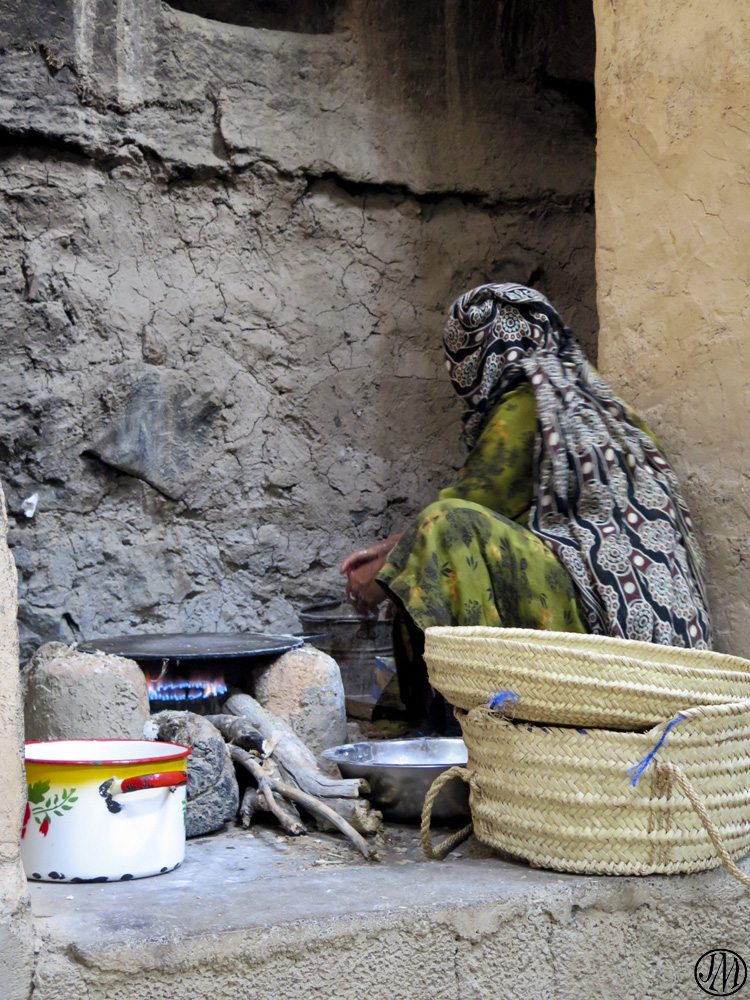
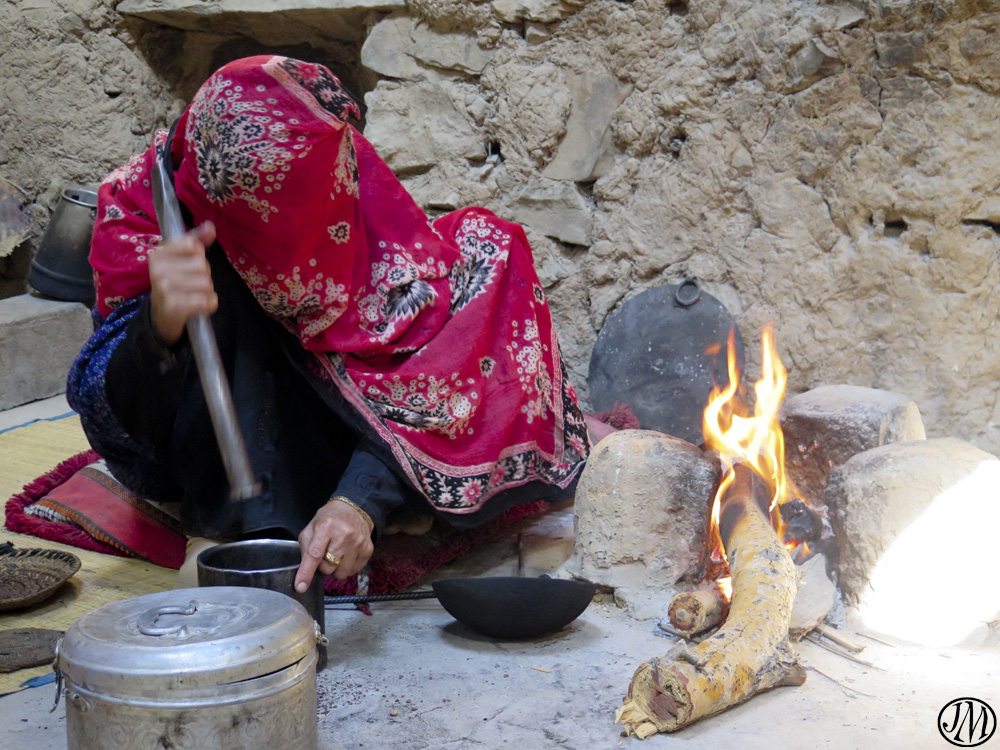
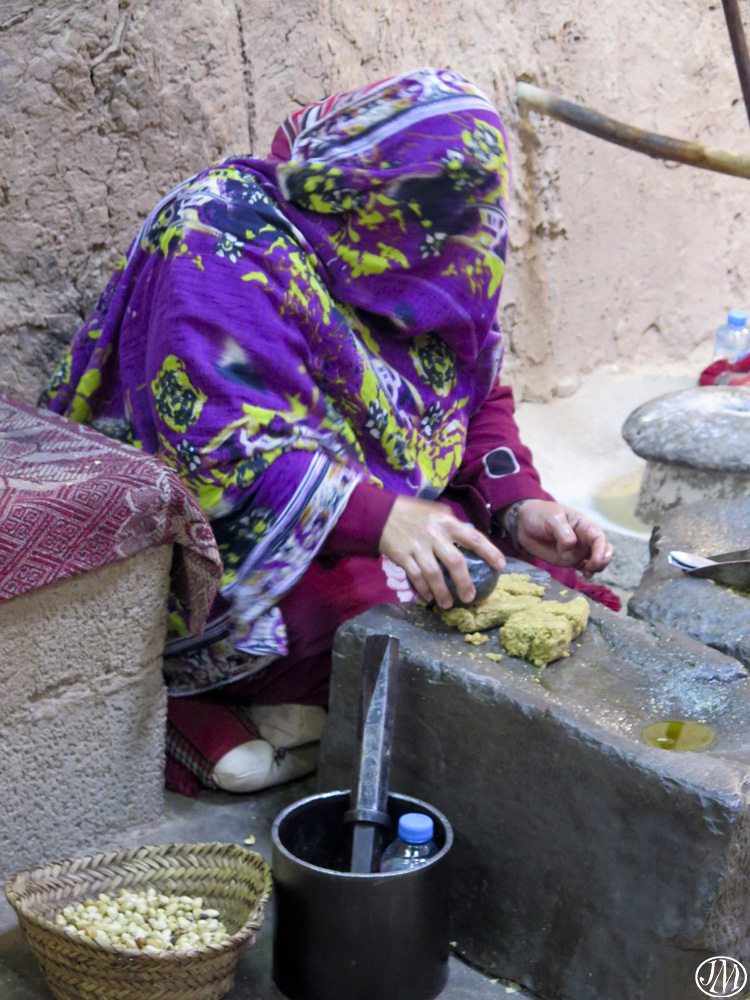
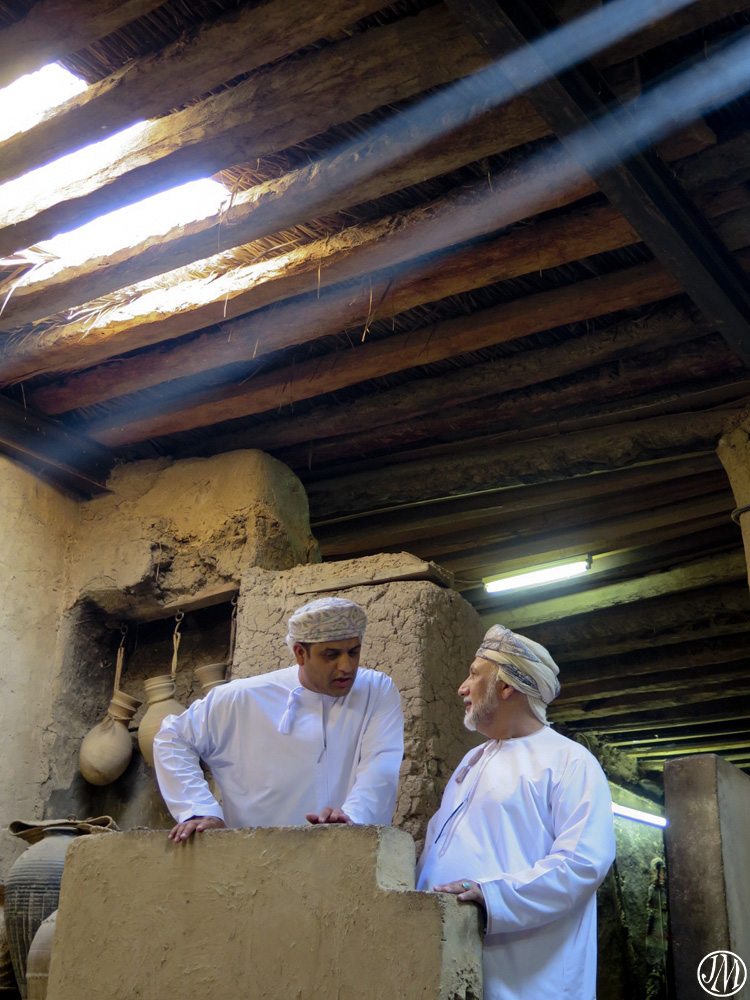
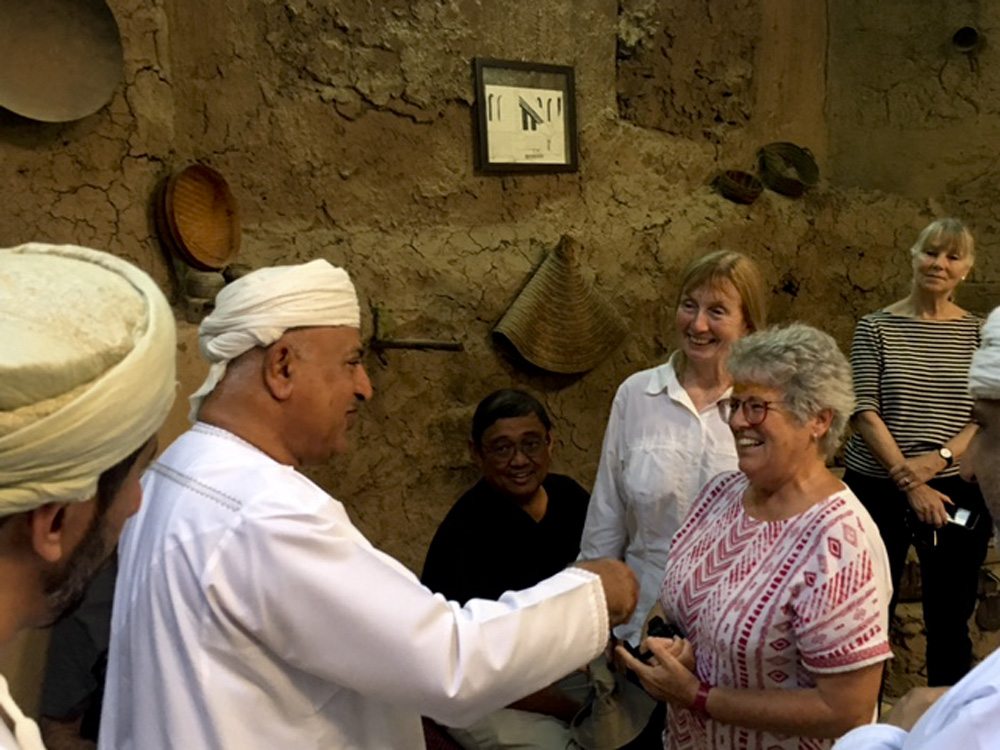
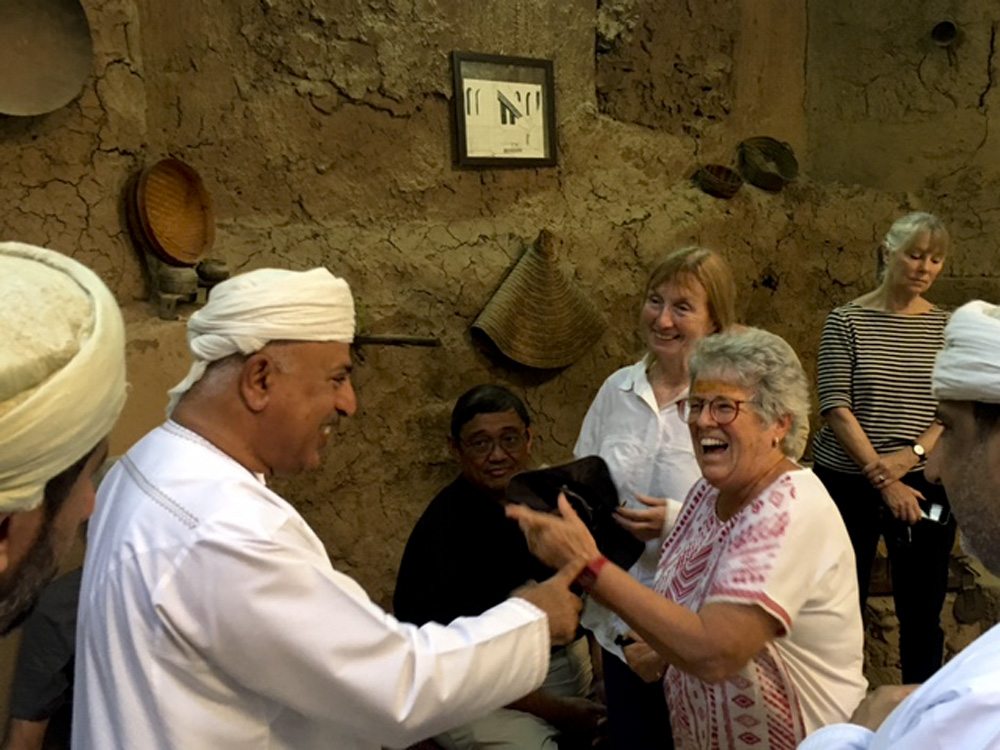
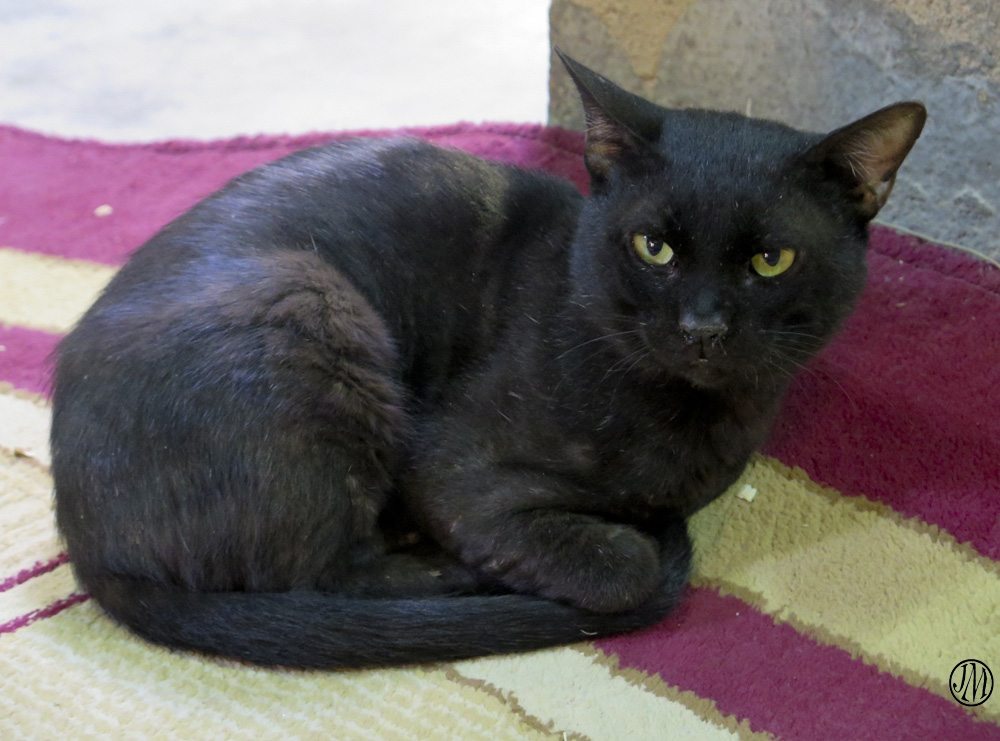
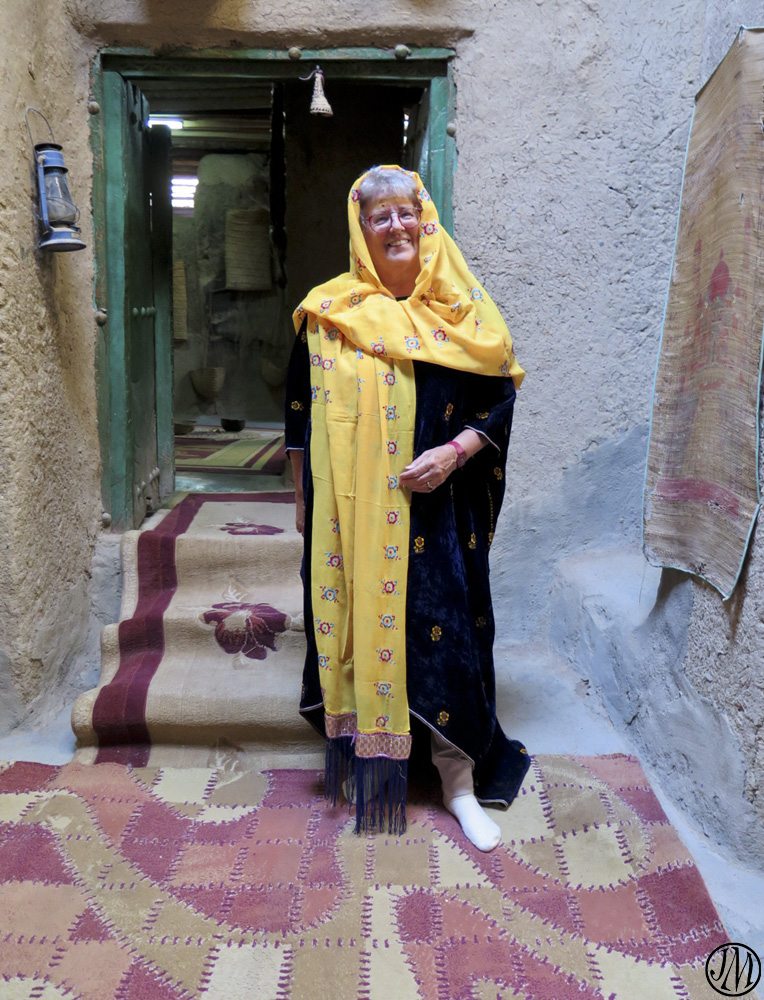
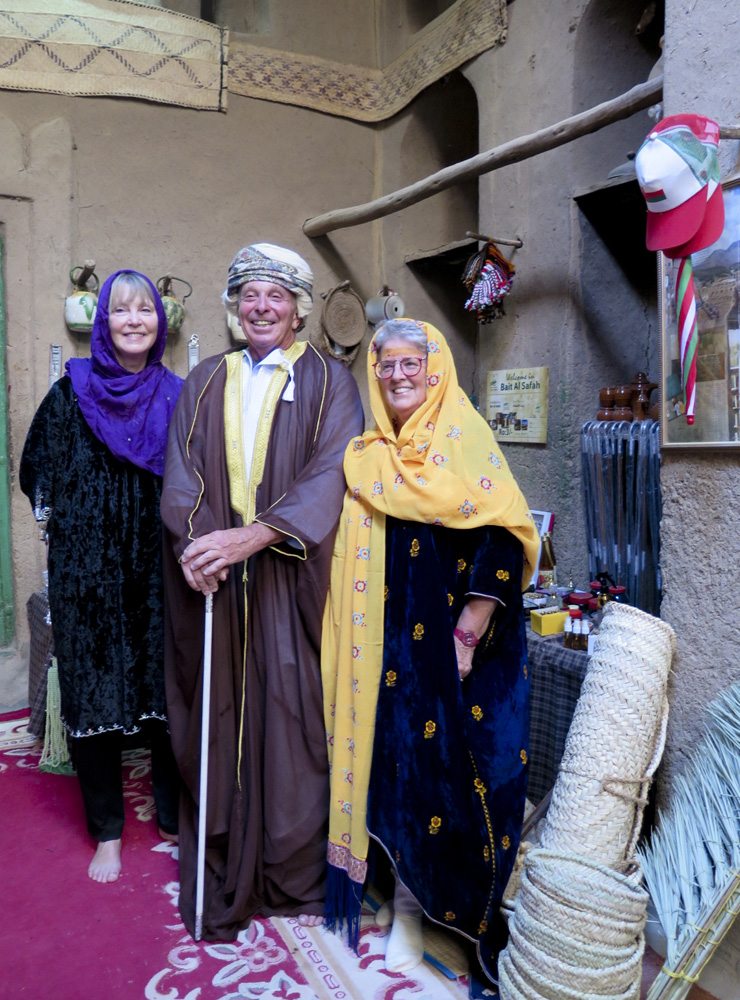
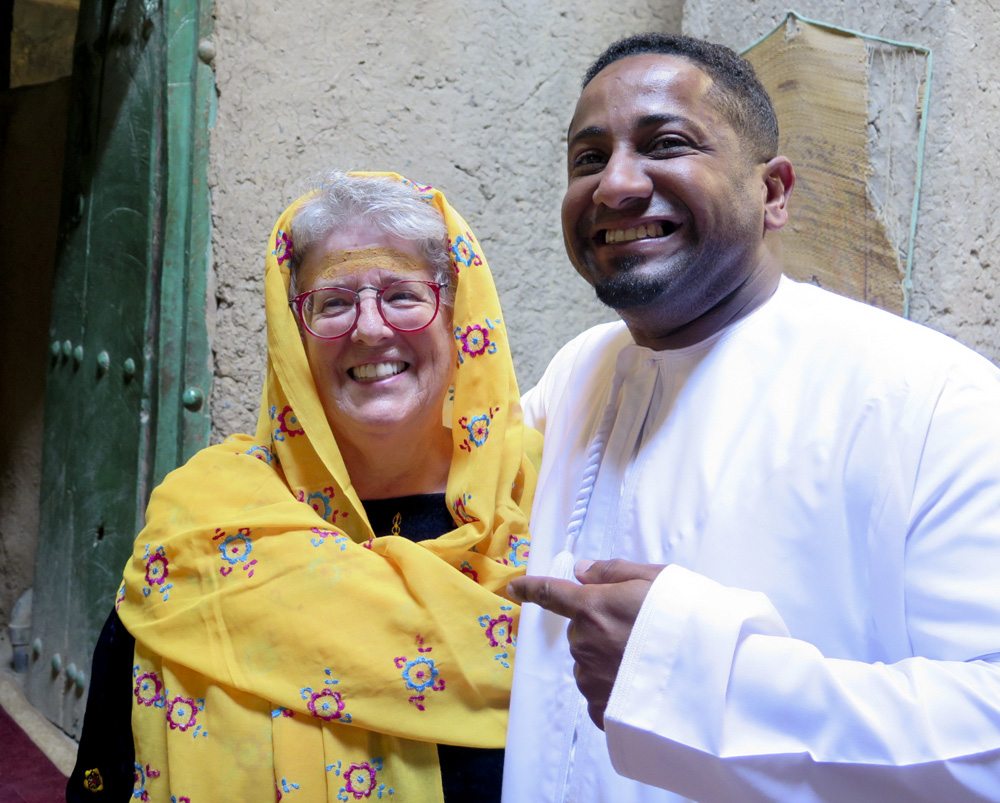
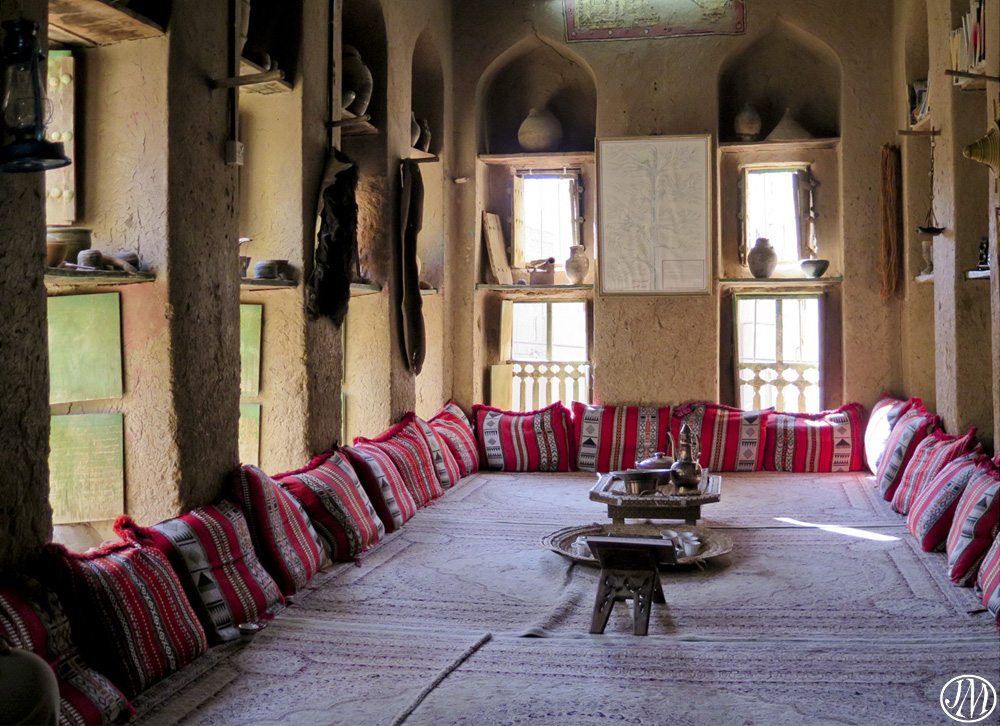
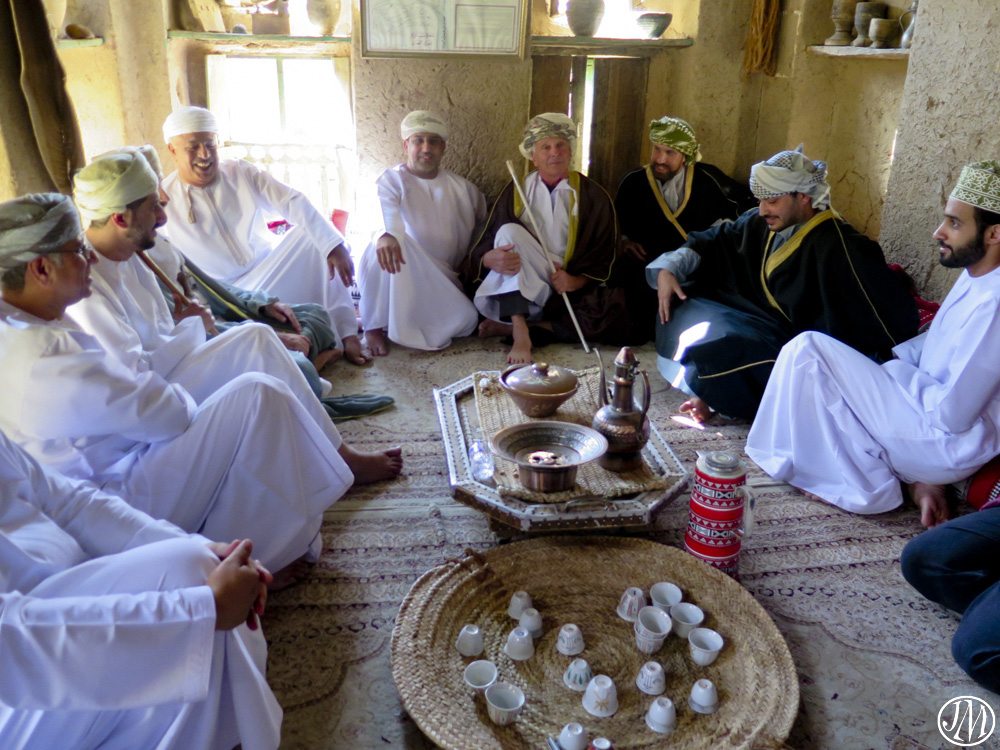
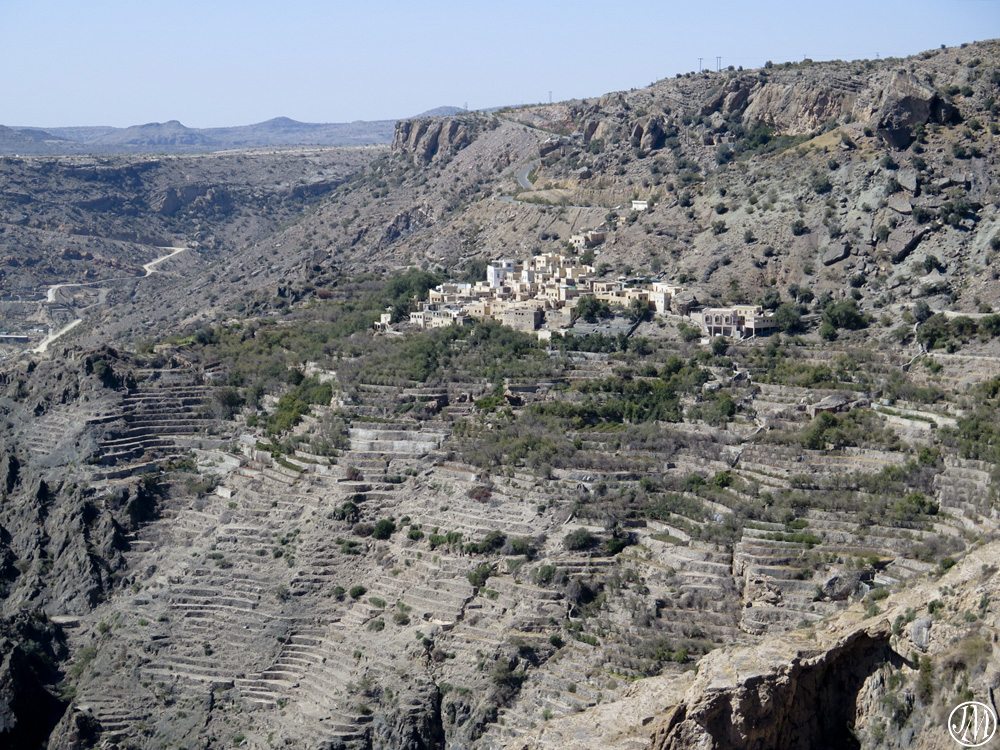
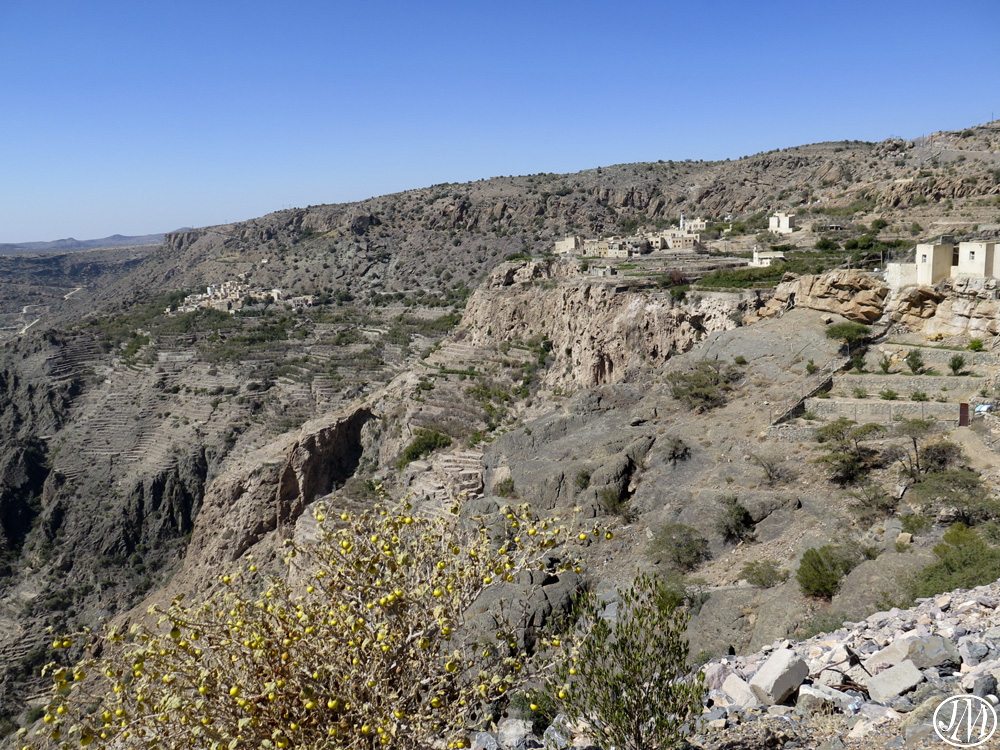
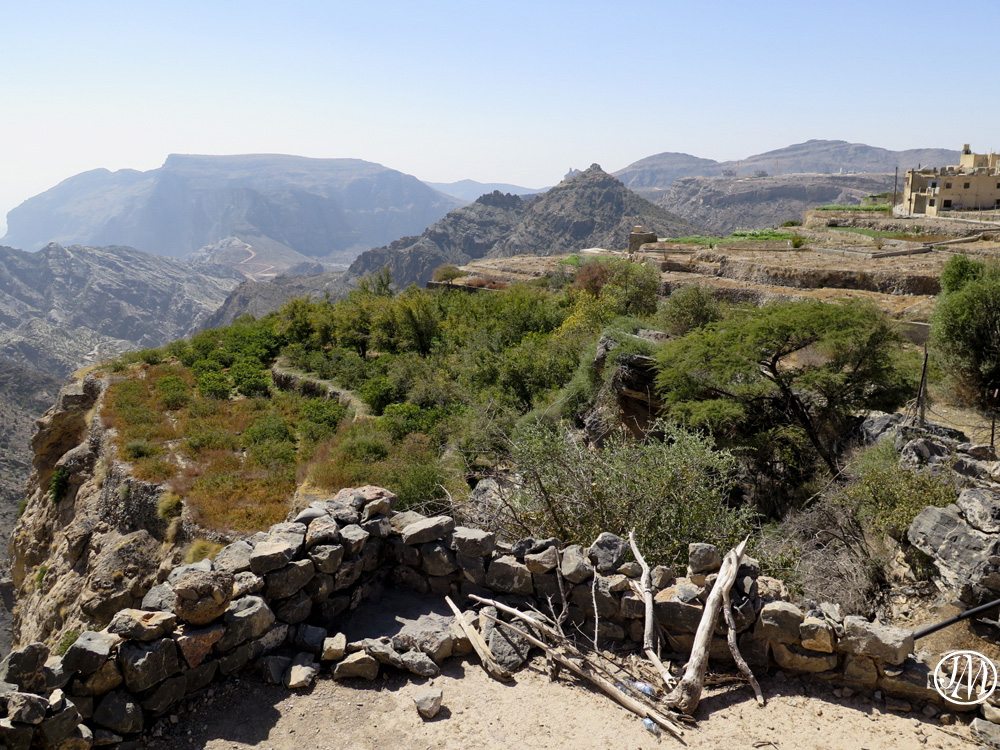
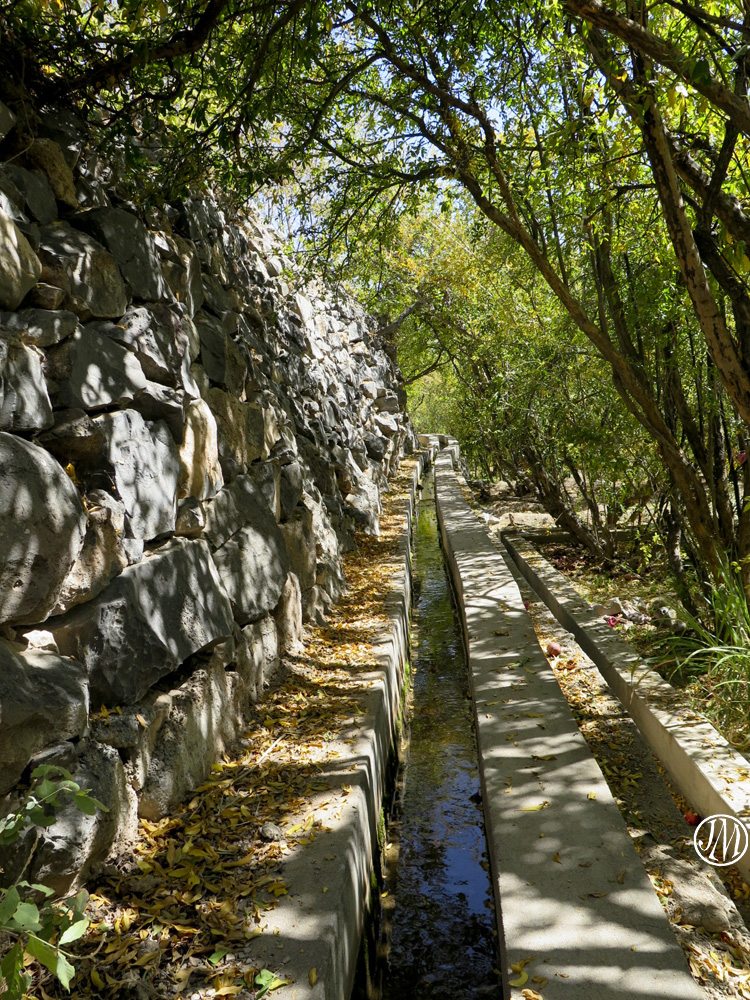
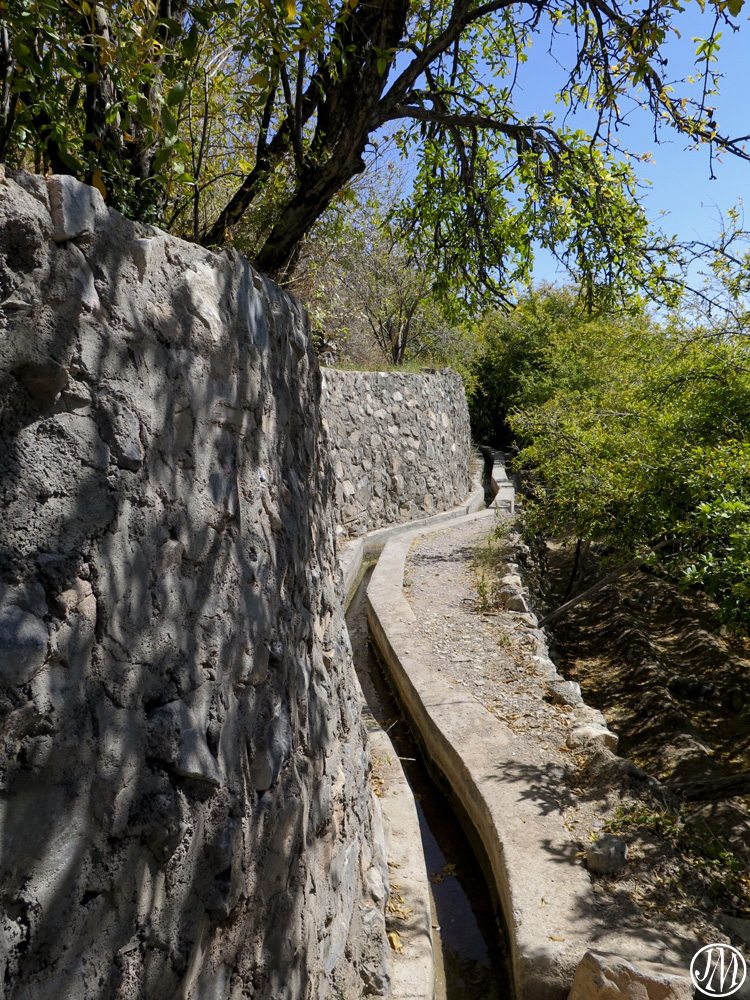
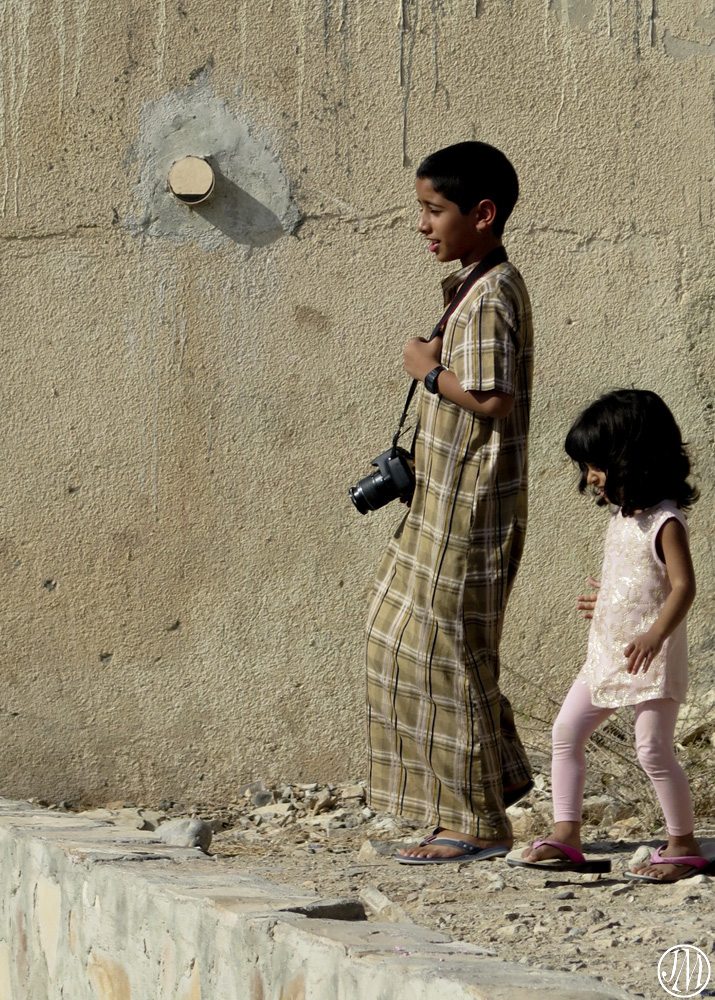
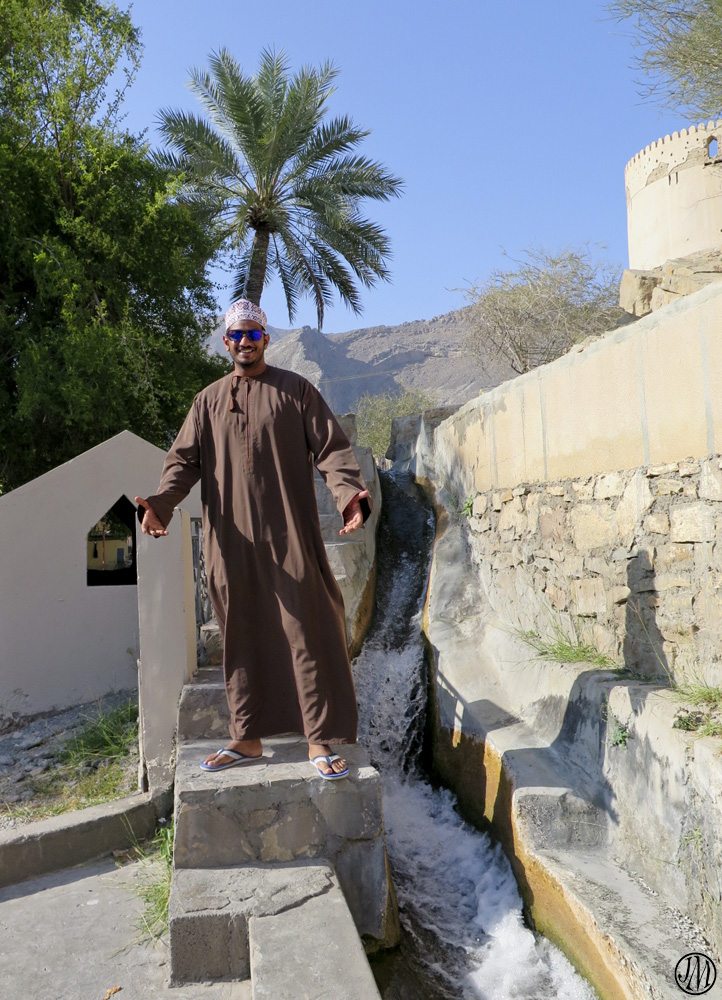
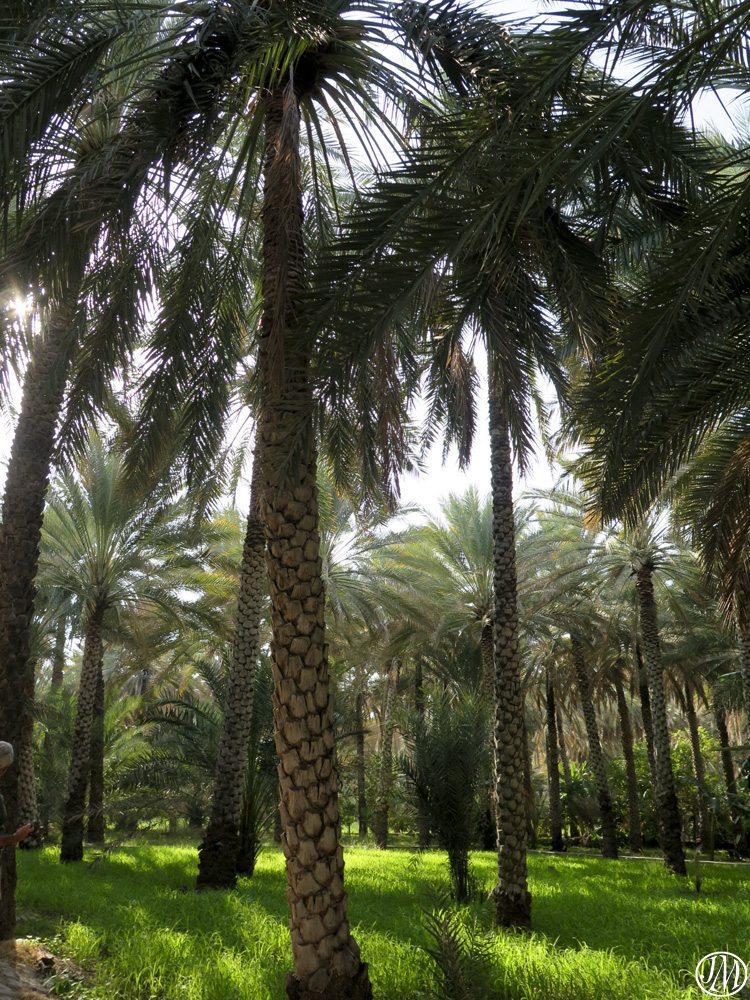
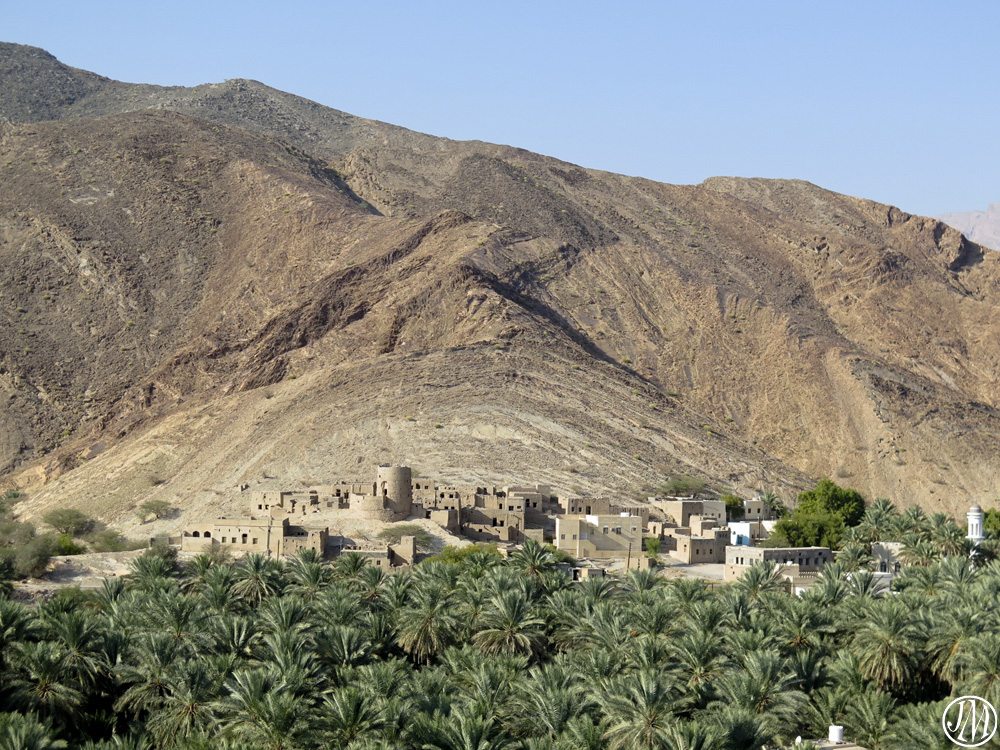
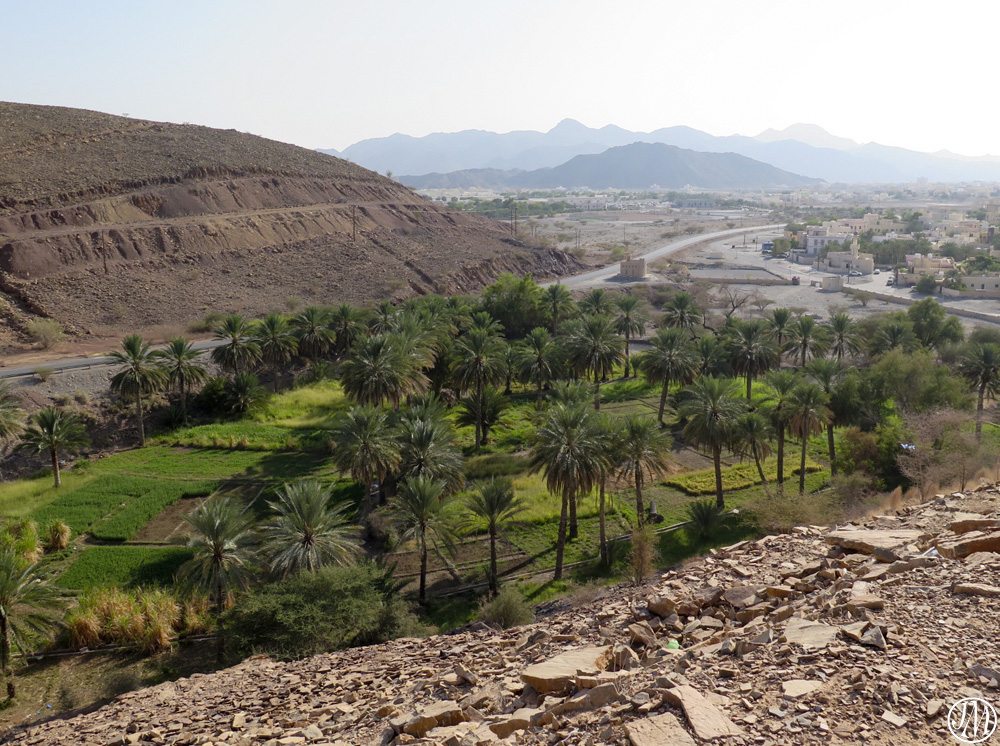
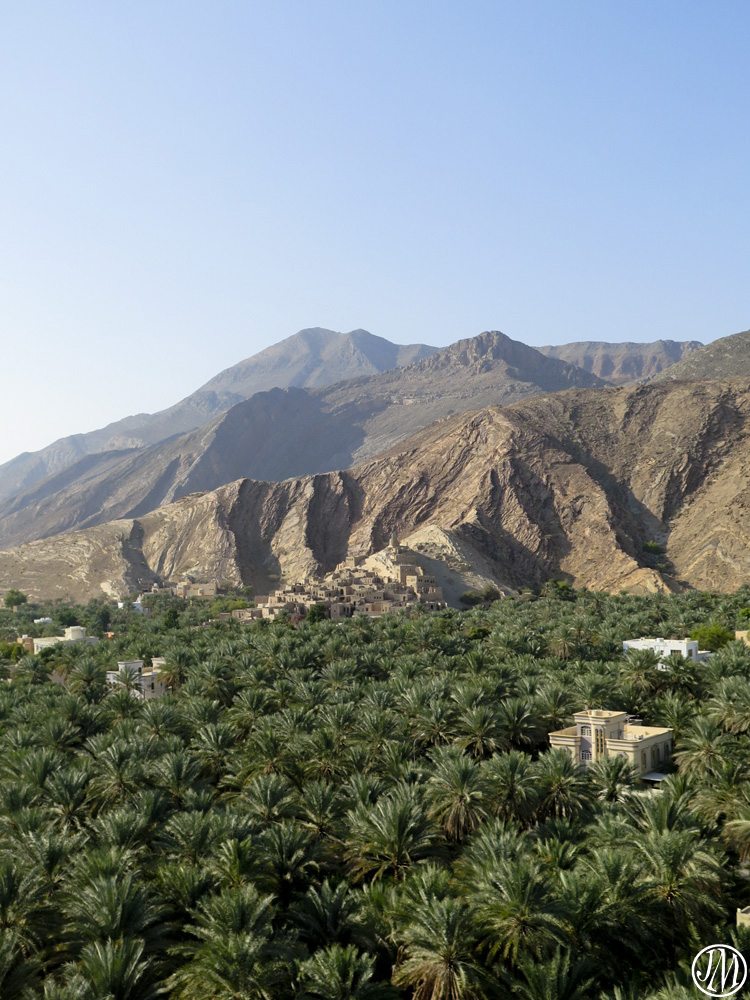
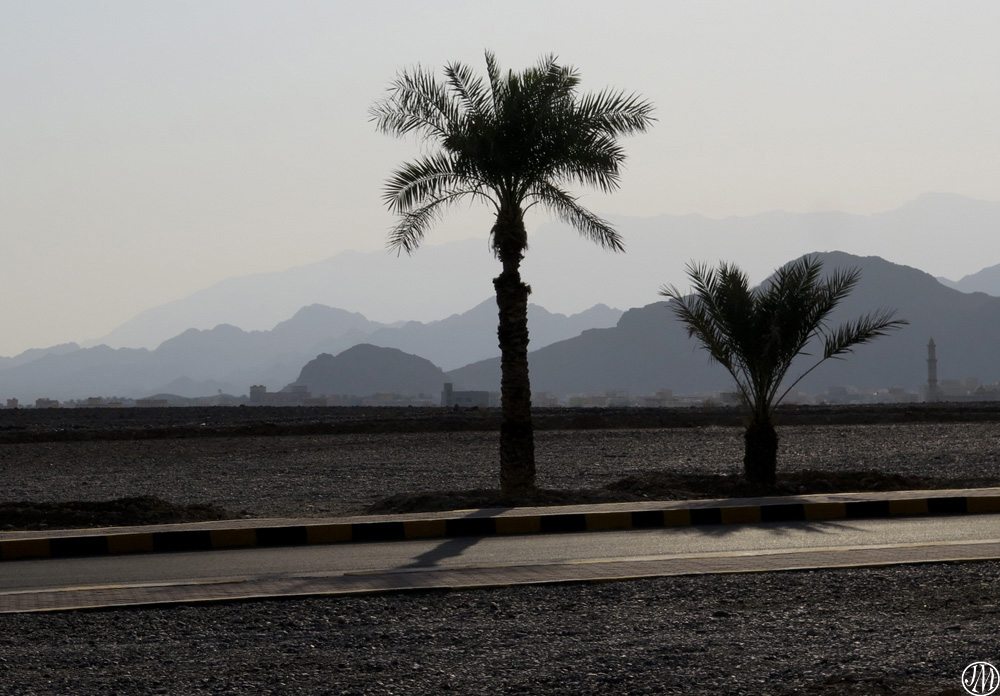
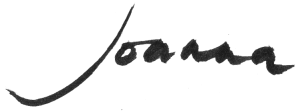
Joanna, do you know what year they built the fort? It looks brand new in the photos.